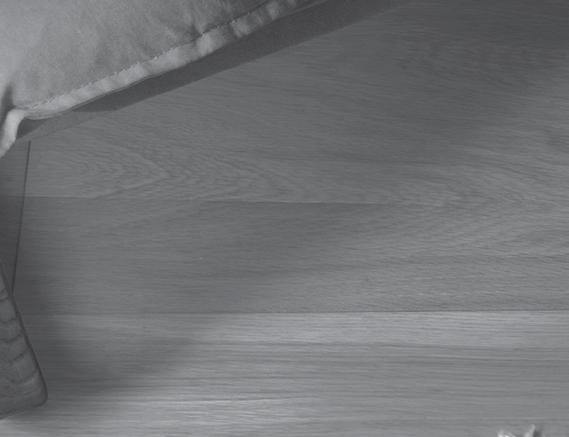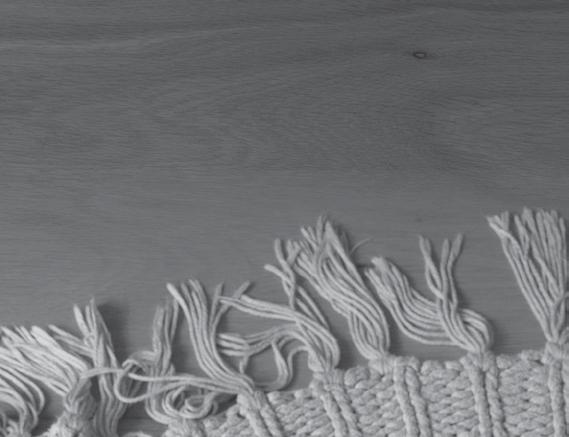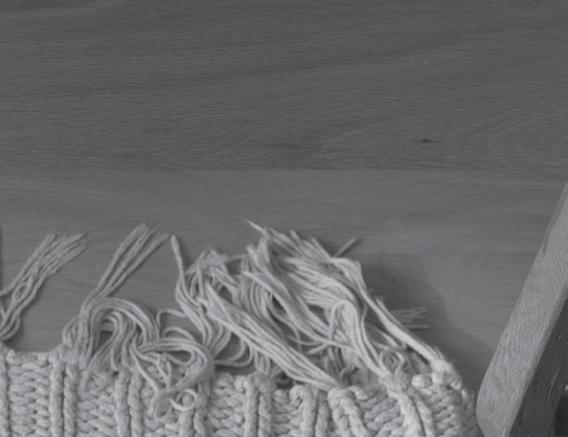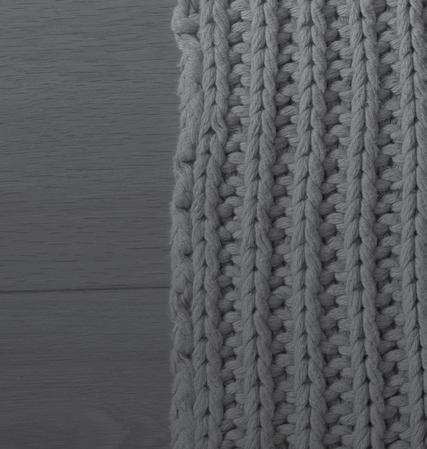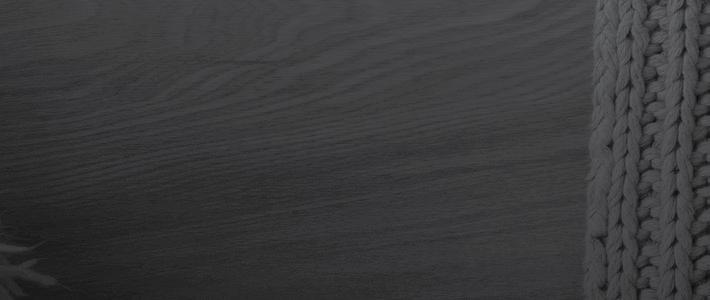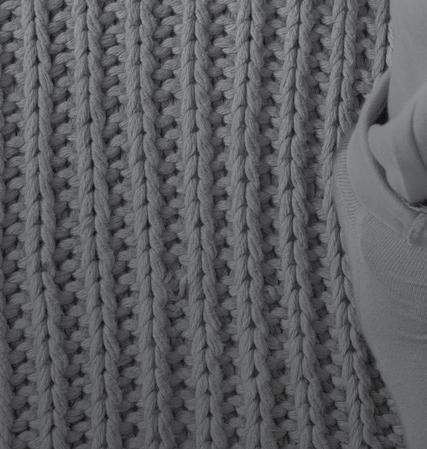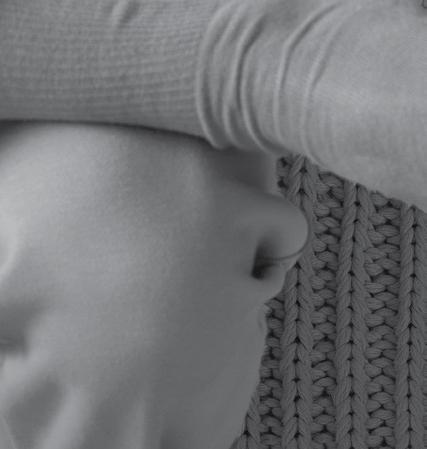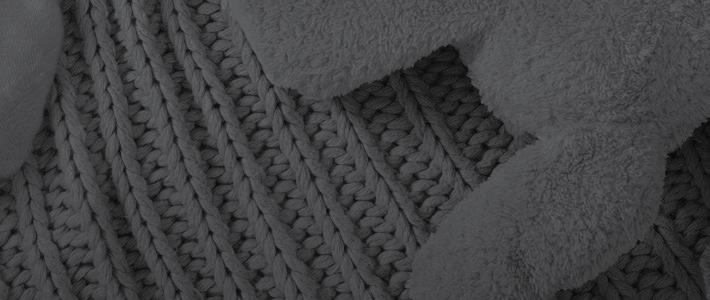
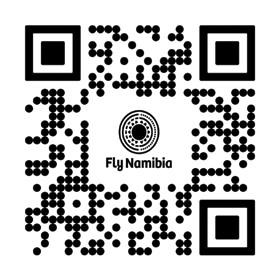
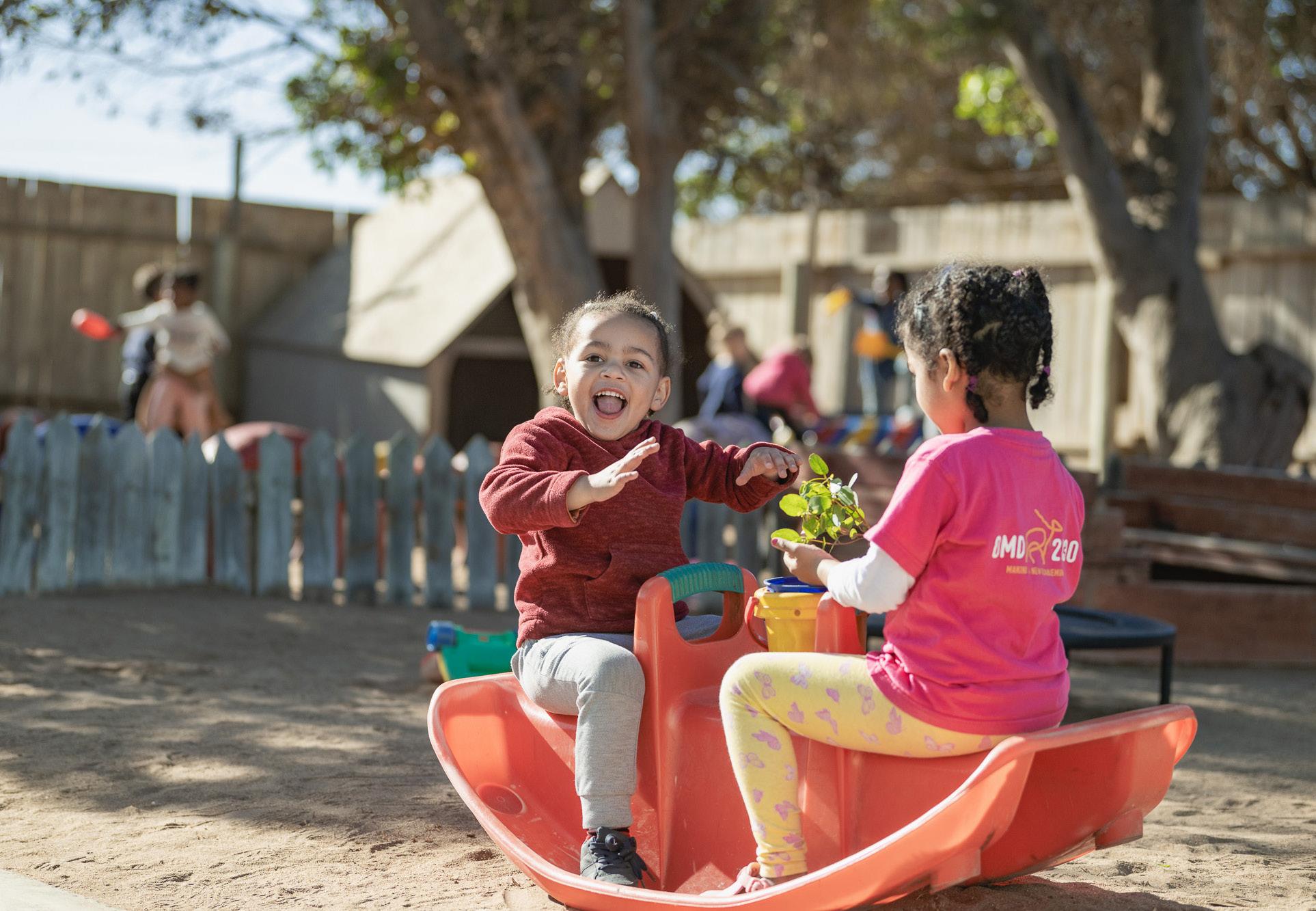

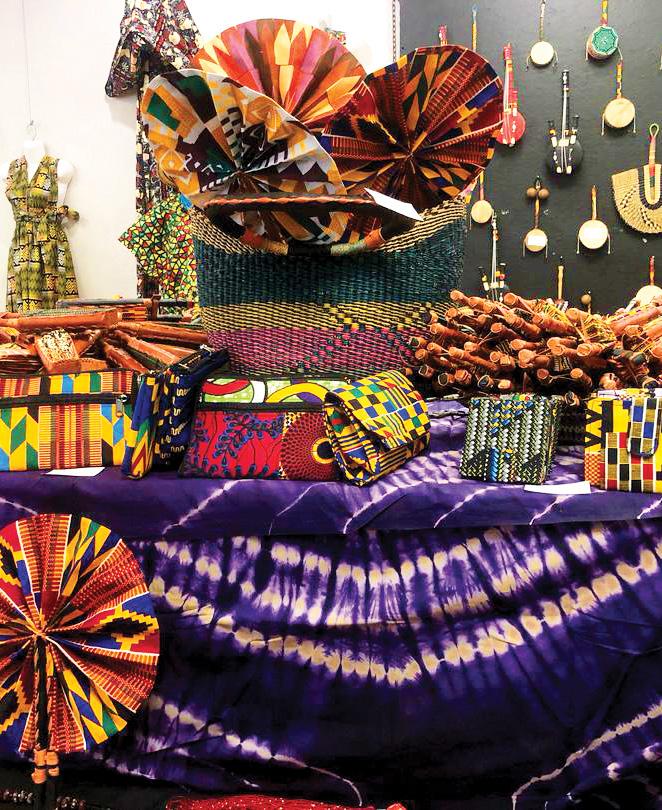

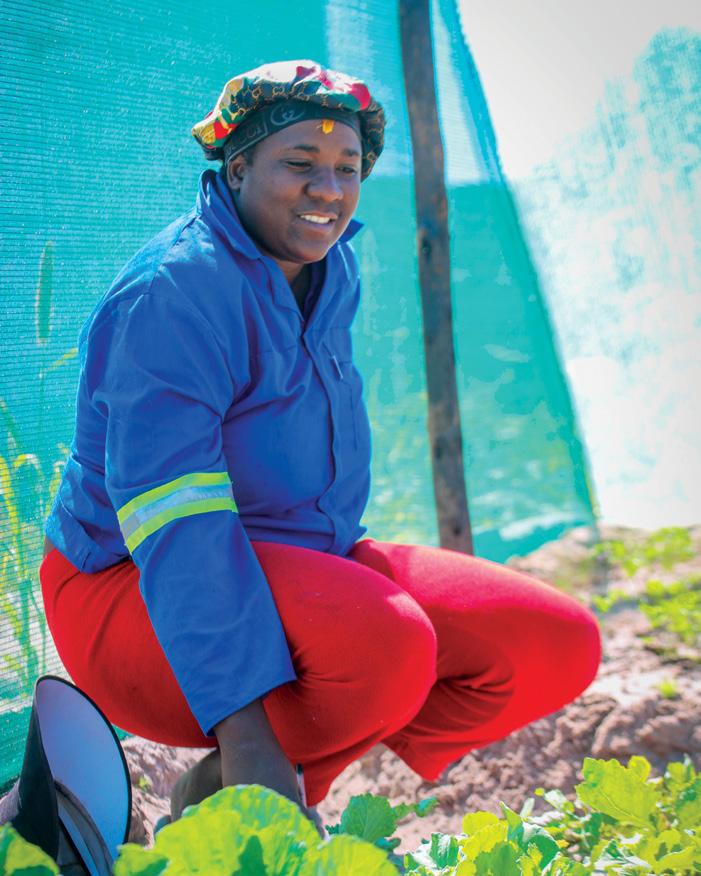
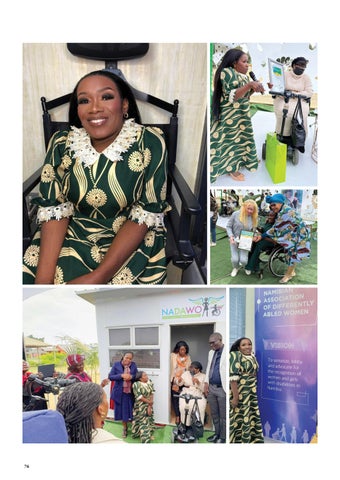









Editor Elzanne McCulloch elzanne@venture.com.na
Production Manager
Liza Lottering liza@venture.com.na
Sales Daleen Small daleen@venture.com.na
Layout & Design
Richmond Ackah Jnr. design@venture.com.na
Admin and Enquiries
Bonn Nortje bonn@venture.com.na
Printing John Meinert (Pty) Ltd
Venture Publications (Pty) Ltd. PO Box 21593 Windhoek Namibia
Disclaimer:
Please note that while every effort has been made to ensure the accuracy and reliability of the content within this magazine, Venture Publications Pty Ltd and FlyNamibia accept no responsibility for any errors or omissions. The views expressed by individual authors are solely their own and do not necessarily reflect those of the publisher or FlyNamibia. All material, including text and images, is the property of its respective authors and cannot be reproduced or used without explicit permission from Venture Publications Pty Ltd.
At Venture Media, we’re more than just a publisher - we’re a multi-media content creation powerhouse. Our expertise includes awe-inspiring photography, striking videography, impeccable design, and crisp podcasts. With a reputation for excellence spanning three decades, we bring unparalleled storytelling to life.
In our boutique publishing and content marketing house, stories that matter take center stage. Every page you turn reflects our commitment to quality and innovation. Dive in and experience the difference that top-tier content creation can make.



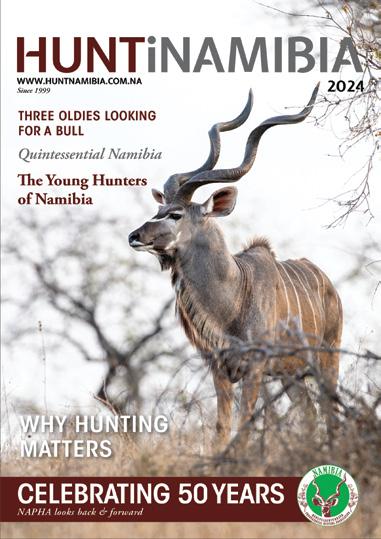





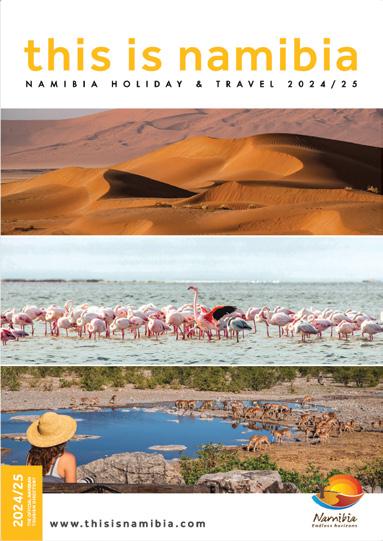
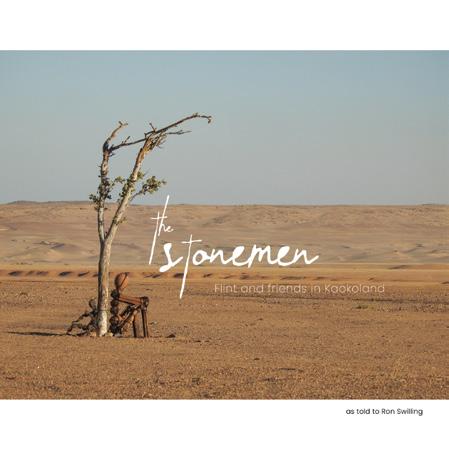


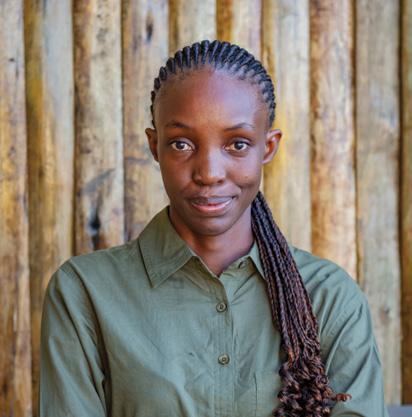




A digital content creator capturing Namibia's stories through bold visuals and real moments. My work celebrates the people, places, and pulse of the nation.





Multidisciplinary

Stand the chance to WIN a dream holiday to the incredible Maldives worth N$80,000.
To enter, simply make any international payments with your Bank Windhoek Visa Debit or Credit Card between 01 April 2025 - 31 July 2025.
Enjoy quick, safe, and secure online shopping or visit bankwindhoek.com.na to open your account and start shopping with confidence today.
Come, journey with us.
Ts & Cs Apply
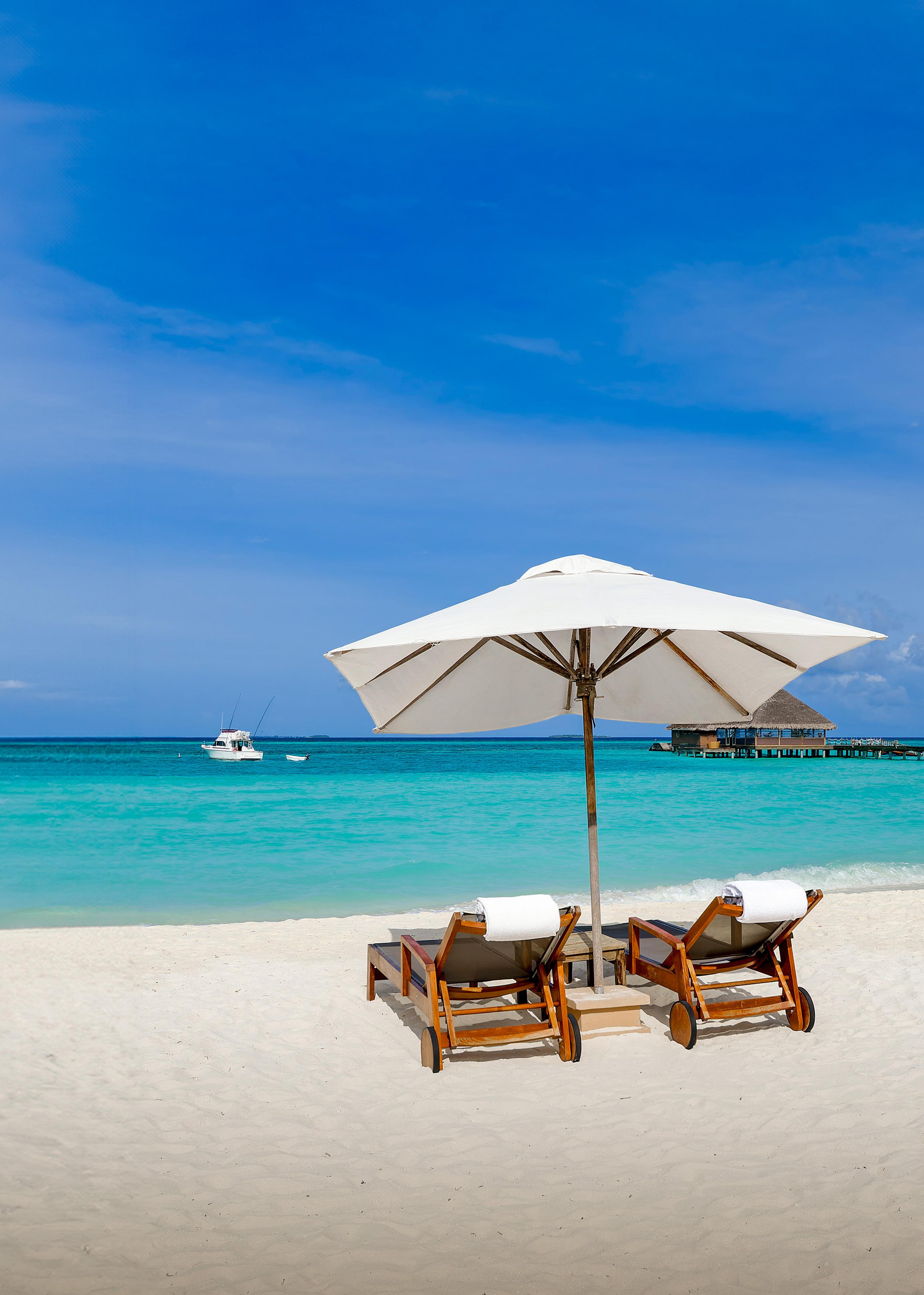


Select which tickets you would like to purchase: destinations, travel dates, morning/afternoon departure. We offer multiple fare options such as: Saver, Classic or Premium
Please enter names as they appear on passport or travel documentation
LOGIN to upload passenger details from previous booking.
More options for the perfect trip
Baggage policy, sporting equipment, over weight luggage or to add an additional bag(s)
Online check-in opens 24 hours before departure of the flight on Fly Namibia How can you make a payment?
Cash payment at: Eros Airport, Ondangwa Airport, Oranjemund Airport
Online card transaction
Check-in opens 1h 30min before domestic flight and 2 hours before international flight.
Electronic Funds Transfer (EFT)
PayToday app Buddy SuperApp
flight information / rules
Read up on all our additional information regarding terms and conditions, and tick the selection box once completed to continue.
Fill in your payment details in our DPO paygate to make final payment.
Transaction confirmation will be sent to passenger email entered.
Windhoek Eros Airport Office
Ondangwa airport office
Rundu airport office
Katima Mulilo airport office
All major travel agents
Items NOT allowed in hand luggage:
Hosea Kutako airport office MAX 20kg Per person
Lotions and aerosols above 100ml, flammable aerosol, sharp objects, i.e. nail files, nail scissors, Leatherman, matches.

Check-in CLOSES 30 min prior to domestic flight and 50 min prior to international flight.




WV*4Z8505 06:30 Eros - Windhoek
Ondangwa - Toivo Ya Toivo 07:30 Mon, Tue, Fri
WV*4Z8506 08:00 Ondangwa - Toivo Ya Toivo Eros - Windhoek 09:00 Mon, Tue, Fri
WV*4Z8595 16:20 Eros - Windhoek Ondangwa - Toivo Ya Toivo 17:20 Tue, Wed, Thu, Fri, Sun
WV*4Z8596 17:50 Ondangwa - Toivo Ya Toivo Eros - Windhoek 18:50 Tue, Wed, Thu, Fri, Sun
WV*4Z8137 10:15 HKIA - Windhoek Katima Mulilo 12:25 Wed, Fri, Sun
WV*4Z8138 13:05 Katima Mulilo HKIA - Windhoek 15:15 Wed, Fri, Sun

Partnership with
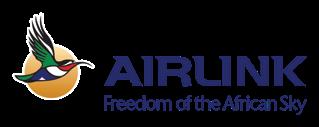

4Z344 16:55 Walvis Bay Cape Town 19:00 Sun
4Z320 07:00 Cape Town HKIA - Windhoek 09:10 Mon, Tue, Wed, Thu, Fri, Sat
4Z326 10:40 Cape Town HKIA - Windhoek 12:50 Mon-Sun
4Z328 18:15 Cape Town HKIA - Windhoek 20:25 Mon, Tue, Wed, Thu, Fri, Sun
4Z329 07:05 HKIA - Windhoek Cape Town 09:10 Mon, Tue, Wed, Thu, Fri, Sat
4Z321 09:50 HKIA - Windhoek Cape Town 11:55 Mon, Tue, Wed, Thu, Fri, Sat 4Z327 13:40 HKIA - Windhoek Cape Town 15:45 Mon-Sun
The seasonal FlyNamibia Safari schedule will resume on 1 May 2025 and run until 30 November 2025. Our daily shuttle flight operates in a clockwise circuit seven days a week. The exact departure and arrival times are determined the day before the flight and will be communicated directly to lodges, tour operators, and transfer companies. A minimum of two passengers is required per sector. All destinations remain available on a private charter basis.
For more information, contact: Email: safari@flynamibia.com.na
Windhoek
Sossusvlei
Sossusvlei Swakopmund
Swakopmund Twyfelfontein
Swakopmund Ongava
Swakopmund Mokuti
Twyfelfontein Ongava
Twyfelfontein Mokuti Ongava Windhoek
Mokuti Windhoek
Sossusvlei Twyfelfontein
Sossusvlei Ongava
Sossusvlei Mokuti
Twyfelfontein Windhoek
Swakopmund Windhoek
*Code Share
HKIA - Hosea Kutako International Airport

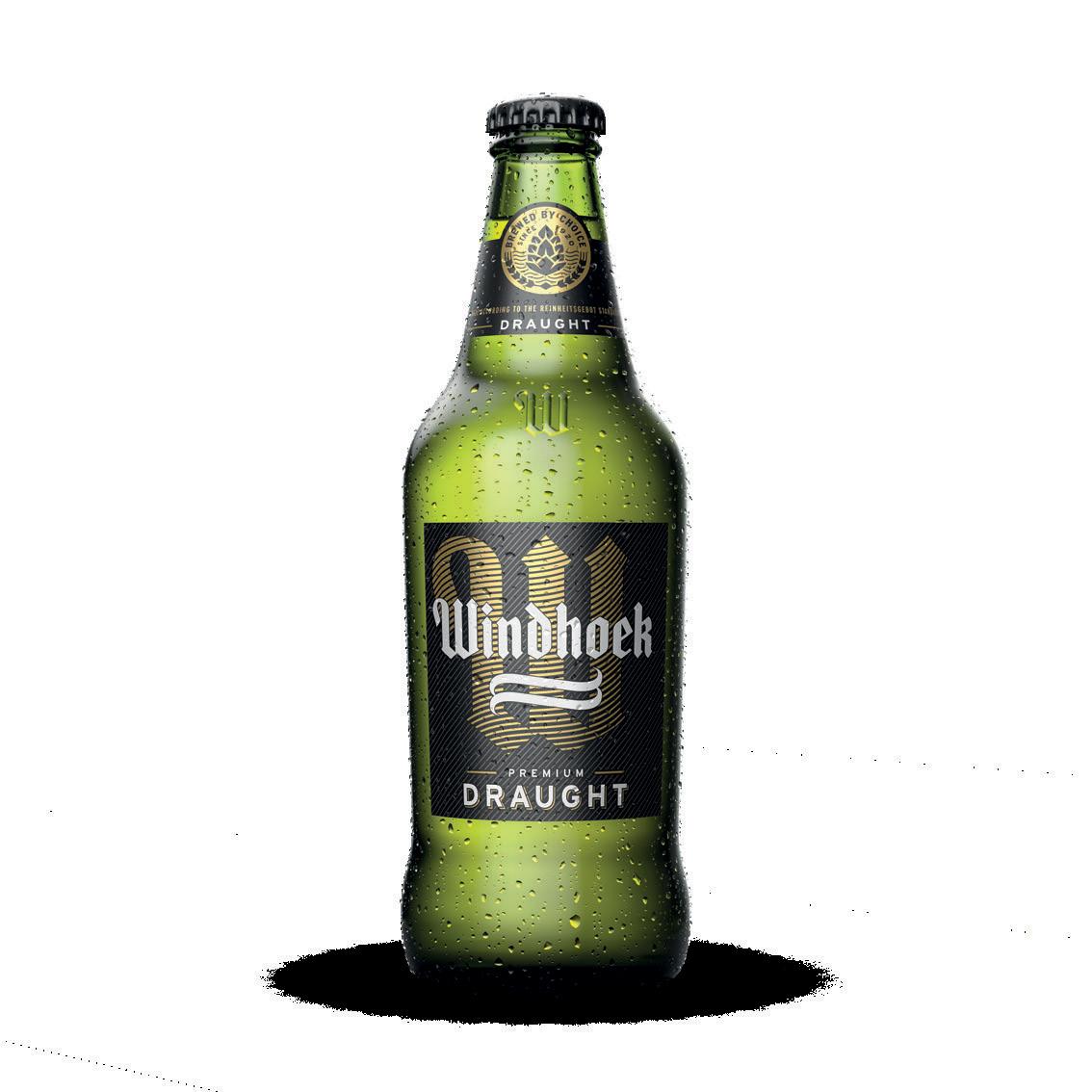

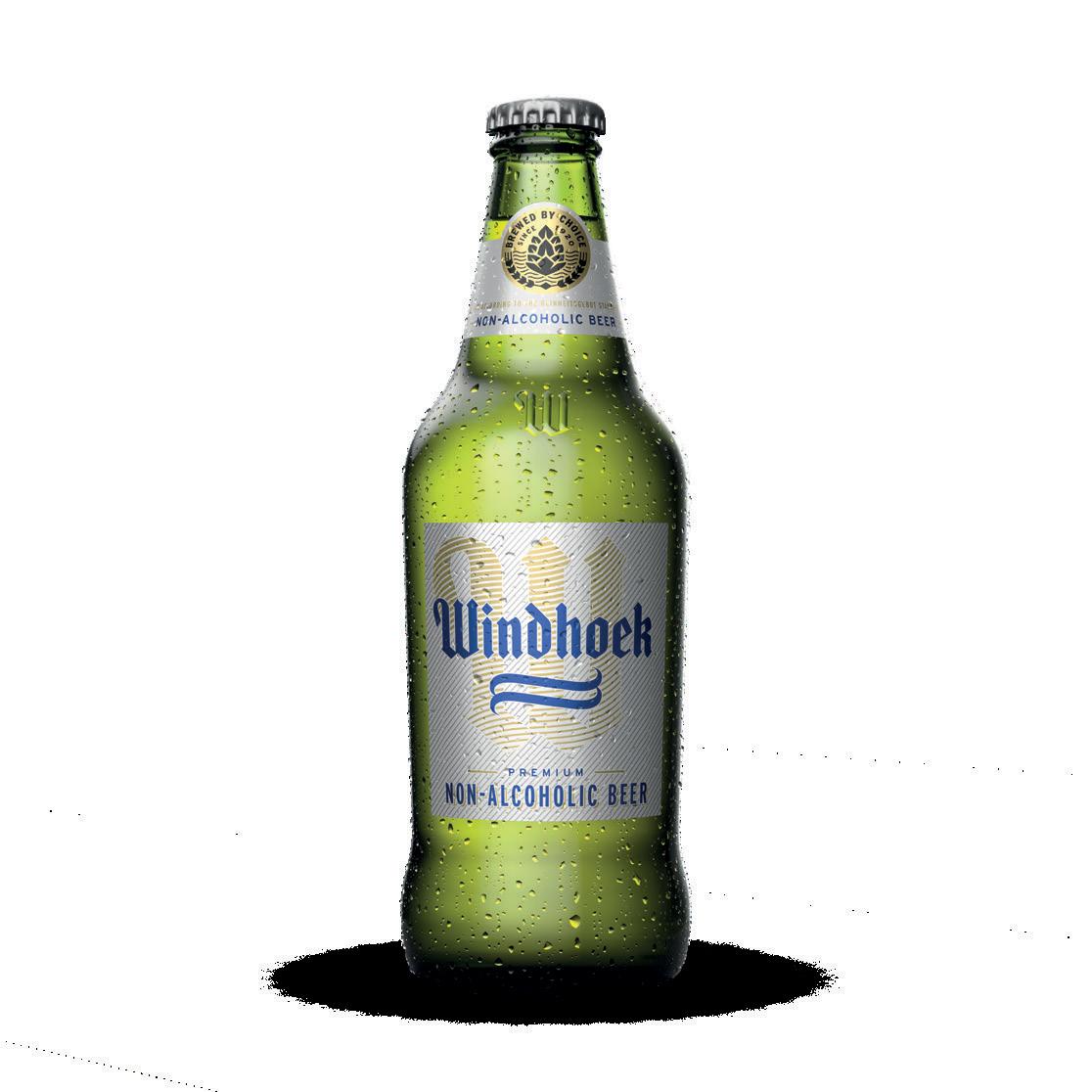


At FlyNamibia, we often say that we are more than just an airline. And this year, we’re proud to show exactly what we mean by that.
In June, we officially launched our “We’re for Namibians” campaign – a yearlong celebration of the people who inspire us, challenge us, uplift us, and make Namibia the extraordinary country it is. From the ground crew to the flight deck, from the passengers in our seats to the communities we serve –everything we do is for Namibians.
This campaign is not just a slogan. It’s a commitment. A commitment to offering accessible, reliable air travel. A commitment to connecting Namibia and neighbouring regions – and opening up opportunities for trade, tourism, and togetherness. It’s a commitment to telling the stories of Namibians doing remarkable things across the country and the continent.

Over the next 12 months, you’ll see these stories come to life – on board, online, and on the ground – as we share the voices, faces, and passions that shape our nation. We’re incredibly proud to fly alongside them, and we invite you to follow along, engage, and be part of it.
Thank you for choosing FlyNamibia. Wherever you’re going, know that we are for you. We are for Namibians.
On the cover



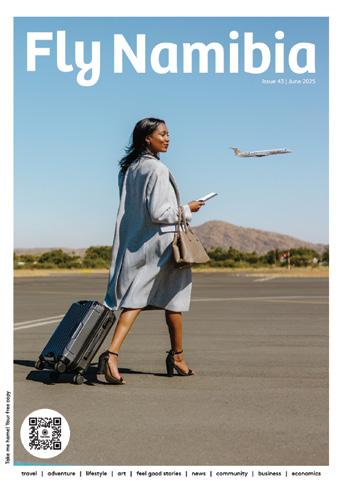




There is something surreal about watching water shimmer across a place known for its thirst. In the rainy season, Etosha sheds its dusty coat and takes on a new, softer form – especially at Fischer’s Pan, where the arid becomes aquatic and the wild finds wings.



Fischer’s Pan lies on the eastern edge of Etosha National Park, near Namutoni. It is a seasonal extension of the vast Etosha Pan, and during the rains, from January through April, it transforms into a haven for waterbirds, its shores teeming with life and song. Where in winter the cracked salt crust bakes under the sun, summer delivers a silver sheen of water, drawing birds from across the continent.
We set out early from Mushara Lodge just outside Von Lindequist Gate, the sky low and moody with clouds. The road to the pan leads around the east of Fort Namutoni and is slick and rutted – the kind of track that hints at adventure. Soon enough it comes into view… Fischer’s Pan stretching out, its water level just deep enough to draw a flock of the feathered variety.
Black-winged Stilts wade in the shallows, their elegant red legs like brushstrokes across the water’s reflection. They move with precision, dipping and lifting, sometimes flaring into flight in choreographed spirals. Just past Twee Palms waterhole, the road cuts through the water-filled pan like a bridge across a sea. At the reedy edge of the water, flurries of movement catch our eye as our vehicle approaches. Black-necked Grebes, with their golden ear tufts glowing in the morning light, dart away from the roadside into the safety of the water. We slow down to inspect where they keep coming from, feeling impish that we are disrupting them from what seems to be rather important work. In the reed tufts along the bank that separates the inundated pan from the road, the grebes are tending to floating nests tucked into the marsh grass. Bright white eggs are on display. Having flitted off as we approached, they now slowly paddle back to their posts upon realising we are no threat. We watch quietly as they dive and resurface, climbing back on their nests – ever watchful, ever busy.
This part of Etosha is different in mood and pace. There are fewer tourists here in the green season, and the animals move to a different rhythm. Impala herds browse the bright underbrush, and a lone giraffe stands silhouetted against a


storm cloud, unmoving, contemplative. Wildebeest and zebra move in and out of view, often half-concealed by the lush grass. The trumpet thorn bushes (Catophractes alexandri) sport their iconic white flowers.
But it is the birds that hold our gaze. A Saddle-billed Stork stands statuesque, knee-deep in the flooded pan. Whiskered Terns dance over the water’s surface, and flocks of Pratincoles wheel in erratic bursts. Flamingos breed here and in the neighbouring giant, the Etosha Pan. For a few months each year, the pans in Etosha become a sanctuary for these delicate lives. It serves as a reminder that Etosha is not only about elephants and lions; it is also about the intricate correlation between timing and transformation.
We completed the loop around the pan near Klein Okevi. And if the birdlife and plains game along our route were not reward enough, the most remarkable sight sat waiting for us on top of a termite mound…
Most photographers have a dream list – those singular shots they hope to get, even just once in their lives. For me, it was that iconic image of a leopard lounging in a camel thorn tree – which I was fortunate enough to get a few years ago at Okonjima Nature Reserve. My second was a photo of a cheetah posing on a termite mound.
A hard brake, the engine switched off. The kids, chattering away in the backseat, forgotten as I lifted my lens to the spotted feline before me.
Click, click, click. “Look Mamma, that cheetah is on an anthill,” Luka calls from the back. I turn and smile at him. “It sure is!” He ticks it off the animal checklist we keep in the car while touring through Etosha. I tick it off a list of dreams in my heart. The air smells of rain, earth and a world of wild possibilities.
Thunder lurks in the distance.
Elzanne McCulloch
First published in the Winter 2025 issue of Travel Namibia magazine. Subscribe to Travel Namibia here: www.travelnewsnamibia.zinioapps.com/shop


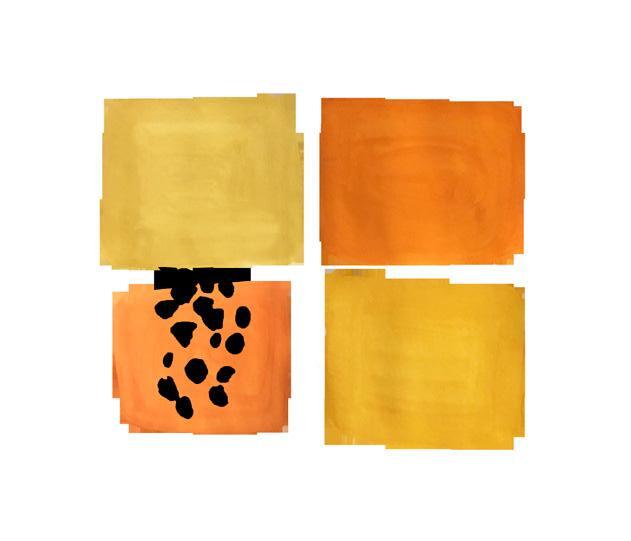






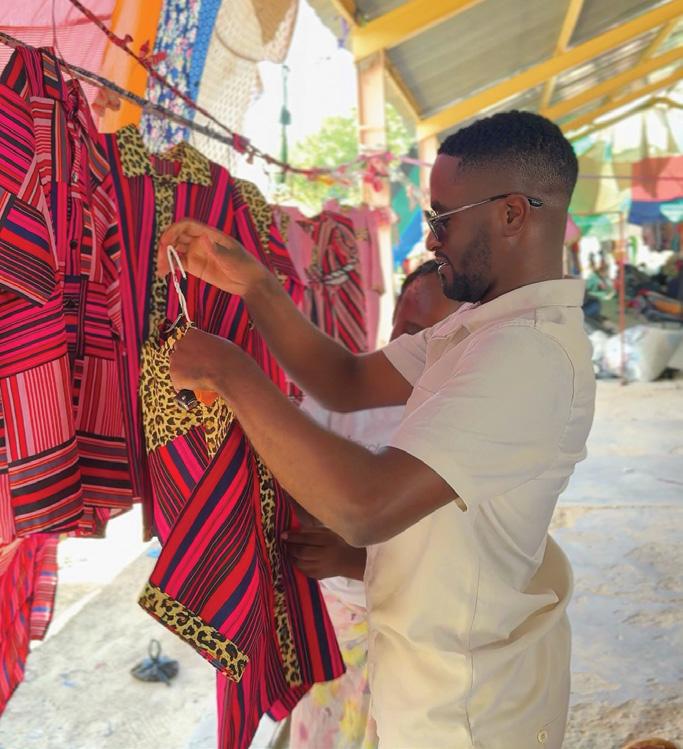

will never forget my first visit to Damaraland. In a sturdy, built-up Land Rover called Kangombe, we arrived at the camp well after sunset. Dinner was a boisterous affair. The camp staff sang around a campfire, and our guide sat with all the other guests at a long family-style dinner table, sharing tales of adventures in this rugged corner of the country. That evening a spotted hyena walked across the deck of my tented suite, and I waited with anticipatory trepidation for him to knock on my door. Earlier that day, Gerhard Thirion of Wilderness had picked me up in Windhoek. The drive from the capital felt like a journey through time. The city’s bustling streets gave way to open plains, dotted with hardy acacia trees and herds of springbok grazing in the distance. As we ventured further north, the landscapes grew harsher and the vegetation sparser. Rocky outcrops rose from the ground like ancient sentinels, their rugged faces weathered by millennia of wind and sun.
I woke up on my first morning at Wilderness Desert Rhino Camp to surroundings that had transformed into a stark, otherworldly beauty. Euphorbia damarana (milkbush) dotted the rocky terrain with its grey-green stems. Toxic to humans, but a lifeline to the desert-adapted black rhino, Diceros bicornis bicornis.
The largest free-roaming population of black rhinos on Earth calls this area home. They have adapted to survive here.
This truth, still unchallenged a decade after that first visit to Wilderness Desert Rhino Camp, carries the weight of a remarkable story – a species once teetering on the brink of extinction, now thriving in this unforgiving desert thanks to decades of unwavering efforts by civil society, government and local communities.
I have been back to this special camp at least once a year since then. Each visit reinstils a sense of wonder in me. Each
meeting with the incredible staff that have made this camp their own. Each rumble of a guide-driven Land Cruiser over gravel and rock. Desert Rhino Camp holds a special place in the Namibian touristic treasure chest. Now, Wilderness has reimagined this much-loved destination, and Wilderness Desert Rhino Camp is reborn, though its heart, and its stories, remain unchanged. It is home to a collection of tales of resilience. Of how this landscape and its inhabitants were bound by an ancient pact of survival. Here in Damaraland, life persists against all odds.
A LEGACY OF CONSERVATION
Surrounded by the rocky red terrains quintessential of Namibia’s Damaraland, Wilderness Desert Rhino Camp is more than a luxurious retreat. Built on a foundation of partnership and purpose, the camp represents a unique collaboration between Wilderness, Save the Rhino Trust Namibia (SRT) and three local community conservancies. Together, they have created a model that marries luxury tourism with impactful conservation, offering guests the opportunity to not only witness but actively support the protection of Namibia’s critically endangered black rhinos.
The new camp itself is a masterpiece of understated elegance, designed to blend seamlessly into the dramatic landscape. Its


six suites, crafted from canvas and stone, reflect the textures and tones of the desert. Inside, rustic charm meets modern comfort, with plush bedding, natural materials and sweeping views that constantly draw your gaze back to the land. Powered entirely by solar energy and built using repurposed materials, the camp’s commitment to sustainability is woven into every detail.
The highlight of any stay at Wilderness Desert Rhino Camp is the chance to track rhinos on foot and by vehicle. This is not a simple game drive; it is an immersive experience that requires patience, respect and a willingness to follow in the footsteps of the experts. Led by SRT trackers – local community members who know the land intimately – guests learn to read the language of the desert, deciphering tracks and signs in the sand.
It is a humbling experience to come face-to-face with these prehistoric giants. Their massive frames and weathered horns tell a story of survival against all odds. Every sighting feels like a miracle, a testament to the relentless efforts of the SRT team members who monitor and protect the rhinos from the ever-present threat of poaching.
The impact of Wilderness Desert Rhino Camp extends far beyond the lodge. By involving local communities in both its hospitality operations and conservation efforts, the

camp has created a ripple effect of empowerment and opportunity. Many of the staff come from the surrounding conservancies, bringing with them a deep connection to the land and its wildlife.
Revenue generated by the camp is shared with these communities, providing essential funding for education, healthcare and development projects. In turn, the communities have become active participants in conservation, understanding that the survival of the rhinos directly impacts their own futures.
Wilderness rhino ranger and guide Bons Roman, who hails from a nearby community, sums it up perfectly: “When you visit, you’re not just staying in a camp. You’re supporting our way of life. You’re helping us protect something priceless.”
Wilderness Desert Rhino Camp, in all its iterations, has always been a call to action. In a world where wilderness is increasingly under threat, places like this remind us of what is at stake – and what is possible when people come together with a shared purpose.
Visiting Wilderness Desert Rhino Camp is more than a luxurious escape. It is an opportunity to connect with the land, contribute to conservation and be part of a story that is bigger than yourself. And in doing so, you will leave not just with memories, but with a deeper understanding of why tourism, when done right, truly matters.

On each return visit to what has cemented itself as (dare I say it) my favourite lodge in Namibia, I look out at the endless landscape, as timeless as it is fragile, and I carry with me a sense of responsibility. It is a reminder of the immense weight carried by those who dedicate themselves tirelessly to the preservation of our natural treasures, and a humbling realisation that every journey has the power to make a difference.
Elzanne McCulloch
First published in the Autumn 2025 issue of Travel Namibia magazine. Subscribe to Travel Namibia here: www.travelnewsnamibia.zinioapps.com/shop





Discover unparalleled conference facilities amidst breathtaking natural landscapes with Namibia Wildlife Resorts. Host your next event at Popa Falls Resort, where the serene Okavango River meets nature’s tranquility. Gross Barmen Resort offers a rejuvenating retreat, blending wellness with state-of-the-art conference amenities. At Khorixas Camp, immerse yourself in the rich history of ancient civilizations while enjoying modern conference conveniences. Lastly, Hardap Resort presents a lakeside haven, perfect for inspiring creativity and fostering collaboration. Elevate your conference experience with us!



After an intense 2024, one of those years where it felt like we were all running on fumes by December, I found myself, like so many others, horizontal on the couch in January, recovering. Not just from the long hours and deadlines, but from the habit so many of us develop when we care deeply: the inability to say no, the compulsion to take everything personally, the subtle but steady drain of overextending ourselves.
And then, during one of those quiet scrolling moments, I stumbled across a reel by Mel Robbins. Just a few seconds long. Just two words: Let them.
I must have replayed it three times. Not because the video was particularly dramatic, but because something shifted in me. Just like that. A click. A release.
Let them.
Let them think what they want. Let them decide what they want. Let them behave how they choose. It is not mine to carry. I do not have to control what people think of me. I do not have to fix every client’s misunderstanding or steer every situation to a perfect outcome. I do not have to make the world agree with me. And honestly, how boring would the world be if it did?
Back in the office, I found myself repeating it to Liza, my colleague and partner in overachievement. We
had just dealt with a client who insisted on doing things in a way we advised against. Usually, we would stew. We would stress. We would dissect it over coffee. But this time, I shrugged and said, “If they want to make the poster purple, even if it is off-brand, let them.” And suddenly, there was less tension in the room.
For six months, I have lived with this phrase like a mantra. It has soothed, strengthened, and saved me more times than I can count. But it was not until I downloaded Mel Robbins’ new book, The Let Them Theory, that I realised I was missing the second half.
Let them… and let me.
Let them go their way. But let me focus on what I can build. Let them choose their version of right. But let me stay aligned with mine. Let them be loud or wrong or absent. But let me protect my peace, prioritise what energises me, and put my time where it matters.
This small shift, from trying to control the world to trusting ourselves within it, has changed the way I work, lead, and live. If you have ever felt worn thin by caring too much or trying too hard, I highly recommend the book (or the audiobook, which is how I listened).
Because sometimes, the most empowering thing you can do is simply to let them.
Elzanne McCulloch

Fraudsters step up phone and online scams in Namibia
According to the Namibia findings of the TransUnion H1 2025 Update to the State of Omnichannel Fraud Report, 63% of respondents reported attempted fraud via email, online platforms, phone calls or text messages between November and December 2024.
The most frequently reported fraud scheme was vishing, where criminals attempt to extract personal information over the phone, cited by 30% of those who had been targeted.
“While cybercriminals will attack at any time using any channel, they appear to focus on channels most popular in the regions they are targeting.”

Namibia records N$1.4 billion in fish exports in April Namibia exported fish worth N$1.4 billion in April 2025, making it the country’s third-largest export product for the month and a key driver of a N$548 million food trade surplus, according to the Namibia Statistics Agency (NSA).
“Fish occupied the third position, accounting for 11.5% of total exports, destined mainly for the Spanish, Zambian and Italian markets,” the NSA stated.
The food trade surplus was primarily supported by the strong performance of fish exports, which made up 78.4% of the food export basket.

Govt spends over N$100 million in livestock subsidies
The government has disbursed N$101,017,803 to 23,203 farmers under the Livestock Marketing Incentive Programme, according to figures released by the Office of the Prime Minister.
Prime Minister Elijah Ngurare said a total of 25,422 claims have been submitted since October 2023, with outstanding claims valued at N$8,782,129 still under processing.
The subsidy programme is funded through the National Emergency Disaster Fund and includes payouts for livestock sales, grazing leases, fodder, licks, and transport.
The total value of claims submitted so far stands at N$109,799,932.
The government allocated N$100 million to the drought relief programme for the 2023/2024 and 2024/2025 financial years.
“This programme is a collaboration between the Office of the Prime Minister and the Ministry of Agriculture, which manages the technical side. Our role is payment once claims are properly verified,” said Ngurare.

Erongo Desalination Plant supplies over 123 million cubic metres of water since 2010
The Erongo Desalination Plant has supplied more than 123 million cubic metres of potable water to the Erongo Region since it began operations in June 2010, operator Orano has announced.
Originally constructed to supply water to Orano’s Trekkopje uranium mine, the plant now serves several municipalities and mining operations across the region.
It is located about 35 kilometres north of Swakopmund, near Wlotzkasbaken, and is recognised as the largest reverse osmosis seawater desalination facility in southern Africa.

The desalination process involves multi-stage filtration and reverse osmosis, using high-pressure pumps and energy recovery systems to improve efficiency. Orano said the plant’s on-site laboratory continuously monitors water quality to ensure it meets both NamWater and World Health Organization standards.
Inflation slows to 3.5% in May as food and alcohol keep upward pressure
Releasing its latest Namibia Consumer Price Index (NCPI) bulletin, the NSA reported that the food and non-alcoholic beverages category was the main contributor, adding 1.2 percentage points to the annual figure.
Housing, water, electricity, gas and other fuels followed, contributing 0.9 percentage points, while alcoholic beverages and tobacco accounted for 0.8 percentage points.
The headline annual inflation rate for April 2025 stood at 3.6%, compared to 4.8% registered in April 2024.
Hotels, cafés and restaurants registered a 5.7% annual increase, while education costs rose by 4.3% and recreation and culture by 4.2%.
Housing and utilities, the largest component of the consumer basket at 28.4%.







Meet Morris Sibange, the creative force behind Morris Baba Arts! From intricately welded sculptures to beautifully beaded wire animals, his handcrafted ornaments bring art to life. Visit the Namibia Craft Centre to explore his unique creations!


Discover beauty at Ethnic Africa! From beautifully handcrafted masks, unique accessories, and stunning ornaments each piece tells a story of African heritage. Find your perfect treasure at the Namibia Craft Centre!
Cornelia Shaulwa welcomes you to Out of Katutura, where eclectic, spunky style meets Namibian urban energy! Explore a bold collection inspired by the vibrant heart of Katutura and take home a piece of Namibia's unique flair.


Mewiliko Trading brings you distinctive, locally crafted treasures. From stylish accessories to one-of-a-kind home decor, each item is thoughtfully designed to offer a unique touch of Namibian culture. Visit the Namibia Craft Centre to experience the beauty of Mewiliko's creations!
Rachel Malone invites you to explore unique clay pieces crafted by talented local potters from the Potters Association of Namibia. Each creation tells a story of skill, tradition, and creativity. Visit the Namibia Craft Centre to discover one-of-a-kind treasures!


The Namibia Craft Centre is located in the heart of the city and has become known as the leading retail space for handmade crafts, gifts, and curios in Namibia. It provides a platform for Namibian handicrafts ranging from jewellery to carved tree roots.
Find us at 40 Tal Street, Windhoek +264 61 242 2222




In the early years of life, a child’s world is shaped by play, imagination and the thrill of discovery. It is in these formative moments, like finger painting on a floor mat, stacking colourful blocks or flipping through picture books, that learning begins. But what happens when that world is absent? When the mat becomes a patch of dirt, and there are no blocks, no books and no safe place to feel seen or secure?
For many young children in Namibia’s informal settlements, this is not a hypothetical situation; it is their daily reality. Many early childhood development (ECD) centres, especially in underserved areas, lack even the most basic infrastructure. Classrooms are often makeshift structures with walls made of corrugated iron, bare cement floors, no windows and no chairs. Children sit cross-legged in overcrowded spaces, learning with little more than their teacher’s voice and their imagination. Essential materials that transform play into learning, such as crayons, puzzles, dolls and storybooks, are painfully absent. Even outdoor play is limited, as many centres lack playgrounds where children can run, explore and simply be kids.
And yet, research is clear: the environment in which a child learns is just as important as what they learn. The surroundings shape the child. A safe, stimulating space does not just support learning, it unlocks it.
including partners like the Capricorn Foundation, the Ministry of Gender Equality, Poverty Eradication and Social Welfare, as well as parents – focuses on upgrading physical infrastructure, providing essential learning materials and equipping educarers with the tools and training they need to create nurturing spaces where young children can feel safe, play freely and begin to learn with confidence.
It starts with the essentials: sturdy walls, a roof that does not leak, and a classroom that is warm during winter and cool in summer. These improvements go beyond mere comfort – they are about dignity. They create an environment where children do not have to worry about wind from cracked windows, rain droplets during the rainy season or cold air seeping through cement floors. Such conditions enable children to concentrate, feel safe enough to explore, and engage in the gradual and wonderful process of growth.
It starts with the essentials: sturdy walls, a roof that does not leak, and a classroom that is warm during winter and cool in summer.
During the first five years of life, a child’s brain develops faster than at any other stage. Every sound, texture, colour and interaction contributes to the way their brain wires itself. A child who feels safe and supported is more open to exploring the world around them. Their brain can focus on learning, making connections and building trust. However, when a child is in a chaotic, cold or unsafe environment, their brain shifts into survival mode, which shuts down curiosity and delays important developmental milestones.
This is also why the presence of age-appropriate toys and learning materials, from building blocks and puzzles to crayons and storybooks, is so important. These are not luxuries; they are tools that help children make sense of their world. Through play, they learn how to solve problems, express themselves, develop coordination and build social skills. In a well-equipped ECD centre, a toy becomes a conversation starter, a confidence booster and sometimes even a child’s first teacher.
Recognising the importance of safe and stimulating environments in a child’s early years, Development Workshop Namibia (DWN) is working to improve the conditions of ECD centres across various communities. This ongoing effort, made possible through the valuable support of stakeholders –
But we know it is not just about materials; it is the people in the room who bring learning to life. That is why, as part of our ongoing support to ECD centres, we have provided training to educarers across various regions, including those from 23 centres in the Omaheke Region. These hands-on, play-based sessions have helped build confidence in using everyday tools to support literacy, numeracy and emotional development. Educators have learnt how to create structure through consistent classroom routines and how to foster environments where young children feel secure, valued and supported.
“This training is such an eye-opener! I will continue to practice what I have learnt in this training. Thank you, Development Workshop, for sharing your skills and knowledge with us.” (Esmeralda, a teacher at Sunshine Kindergarten in Witvlei).
The journey to improve early childhood development in Namibia is ongoing. But with every safe classroom, every shelf of toys and every opportunity for play, we move closer to a future where every child gets the right start in life.
Much of early learning is not just about what is taught; it is about what the environment makes possible. Does the learning space spark curiosity? Offer calm? Or help a child to feel seen, safe and like they belong?
That is the heart of a strong ECD foundation. It is not just a room, but a space that nurtures, that says to every child: you matter here, and here, you can grow.
Magano Frietya


Connecting dreams to a decade of knowledge and experience
The leading aviation training organisation in Africa.








As you move past the festive flurry of local curio gifts stacked on tables and hand-made souvenirs being sold at the Namibia Craft Centre, a single flight of steel stairs leads you to a room where the entrance is flanked by brightly coloured fabrics mounted on the wall. A touch of West Africa in the heart of the capital city, where a vibrant and kaleidoscopic ensemble of Ghanaian commodities is showcased.
I am warmly welcomed by Leenah, brand ambassador and saleswoman. Originally from Ghana, Leenah has lived in Namibia for the past 25 years. Despite settling in Namibia with her family at the age of five, she remains tethered to her Ghanaian heritage, especially to the rich fashion industry of her homeland. Leenah’s mother and brother regularly travel to Ghana’s capital, Accra, where they purchase fabrics and apparel. It is a collective family effort and a celebration of Ghana woven through the lives of the pan-African diaspora in Namibia.
As she shows me around, I am immediately struck by the vivid motifs adorning the room. Draped gracefully over mannequins, the garments look (and feel!) anything but garish or synthetic; unlike the cheaper, near-identical, mass-produced fabrics which have flooded the market in recent years.
Perhaps the most popular fabric from Ghana sold worldwide, kente is a multi-coloured, threaded textile which derives its name from the Akan word for basket because of the basketlike weaving pattern. It is also called nwentoma (meaning “woven cloth”) in Twi and kete in Ewe. Kente is made by sewing together handwoven cloth strips of silk and cotton.

Originally reserved for royalty and sacred ceremonies, kente cloth gradually became more widely used over time.
This eclectic collection also featured tie-dye and batik, which involve techniques to create patterns on cotton fabric using wax before applying dye. These methods often include twisting, pleating and binding the fabric with string or rubber bands to achieve unique, storied designs. In recent years, dyed batik has seen a surge in popularity within Ghanaian fashion culture and has emerged as a major export product. Items on display range from small, traditional stringed instruments to wide-brimmed woven hats. You will find flowy Ankara (originally named “Dutch wax prints”) summer dresses and skirts, kente-inspired purses and bags, beaded jewellery and fun-patterned sneakers that bring a modern twist to heritage. Ghanaian woven straw fans – commonly known as bolga – are arranged alongside strips of kente fabric sold individually, perfect for custom-made creations. Chic yet functional baskets double as stylish bags, while miniature drums, Ghana shakers, flamboyant fabric fans and indigopatterned hair accessories add playful touches. Among the standout pieces are the elegant smocks known as Gonja (most commonly worn by men), originating from Northern Ghana, demonstrating the country’s rich textile tradition.

Kente cloth holds a deep cultural significance and is closely tied to Ghana’s identity, spirituality and national pride. The Namibia Craft Centre offers visitors an open invitation to experience the distinctive and celebrated vibrancy of Ghana through regular exhibitions, creating a space where tradition, artistry and cultural appreciation can flourish.
Madeleen Duvenhage




n today’s hyperconnected world, cybersecurity is no longer just an IT concern. It has become a business imperative, a governance priority, and increasingly a matter of national security. For Namibia, the ongoing digital transformation brings immense opportunities, but it also calls for serious attention to risk.
The second edition of this year’s Namibia Trade Network Business Breakfast Club, continuing under the theme “The Future – Envisioning Tomorrow”, focused on the crucial and complex issue of cybersecurity. Despite the winter chill, entrepreneurs and executives gathered at the Stellenbosch Wine Bar and Bistro for the event. Proudly sponsored by hosts AfricaOnline, the Business Breakfast Club once again welcomed a panel of distinguished experts to share their knowledge.
Digital progress offers promising opportunities for Namibia; yet, it remains essential to approach these advancements with clear-eyed caution, mindful of the vulnerabilities they introduce. From small businesses to government departments, healthcare providers and financial services, no sector is immune to the growing complexity and scale of cyber threats.
Panellists dove straight into unpacking the balance between the vulnerabilities and possibilities of our digital systems. Each offered valuable insights into how we can collaborate to protect digital infrastructure and data, educate industries, and stay ahead in a world where threats evolve as rapidly as the technology itself. The discussion brought together diverse voices from across the cybersecurity spectrum, including Mr Richard Broeke, Managing Director of the global cybersecurity firm Securicom. In conversation with fellow panellists Tanya Höpker from Meinert Cybersecurity and Mr Ndinomwene Modjila, Principal of IT Operations and Support at the Financial Intelligence Unit of the Government of the Republic of Namibia (FIC). Panelists addressed the urgent need to improve online literacy and the overall digital experience in Namibia. “We still have a long way to go in Namibia,” Tanya admitted, noting that the human element remains a constant in order to develop cybersecurity resilience.
Phishing emails, especially, are still among the most common threats in Namibia. In fact, they are alarmingly more prevalent and localised than ever before. With the help of artificial intelligence, these messages are being produced faster, with greater sophistication and more precise targeting. Because AI can automate the process, phishing campaigns are now cheaper to launch, which means small and medium enterprises are increasingly at risk. Approximately 30% of phishing emails in Namibia still reach their intended recipients – this figure represents a significant risk and highlights the urgent need for better awareness and training.
To approach cybersecurity in a practical way, Tanya Höpker outlines four practical ‘buckets’: prevent, detect, respond and recover. Categorising efforts in this way helps businesses
identify what they need, whether it is maintaining offline backups, encrypting sensitive data or introducing other tailored safeguards.
The discussion also raised a critical question: what are the most pressing cyber challenges facing Namibia as a nation? The panel immediately agreed: legislation is urgently needed. Good governance and strong compliance frameworks are essential. If the right laws are implemented across national, sectoral and organisational levels, businesses will be better positioned to defend themselves against cyber threats.
Importantly, small steps can make a big difference. Many of the most effective solutions come at little or no cost. Multifactor authentication, for example, is widely available and easy to use, yet remains underutilised by many Namibian organisations. The same is true for well-managed password policies, which are often overlooked. Without basic safeguards in place, businesses become easy targets. As Broeke pointed out, the most effective tools are often the simplest.
In many organisations, basic IT hygiene is still lacking. Computers are often left unlocked, or only set to auto-lock after 30 minutes of inactivity. This is far too long to be effective. Password managers are another example of balancing security and usability. Instead of remembering multiple complex passwords, users can store them securely in one place, accessed through a single master password. This approach simplifies the user experience while significantly improving password security.
Artificial intelligence was another recurring theme in the discussion. Is it the dreaded digital overlord or a useful resource? Artificial intelligence is often seen as a threat, especially in the cybersecurity space. It is true that AI is being used by criminals to automate attacks and increase their impact. However, it can also be a powerful tool for defence. Businesses can use AI to detect unusual activity, respond automatically to threats and reinforce their overall security posture. Whether AI becomes a risk or a resource, though, depends entirely on how it is applied.
In Namibia, SMEs are particularly vulnerable to cyberattacks. Without the budget, infrastructure or dedicated security staff of larger companies, they are seen as easy targets by cybercriminals. This makes it even more important for SMEs to adopt affordable protective measures and invest in building awareness across their teams.
The next Business Breakfast Club will take place in August and will explore the theme of Corporate Governance in the modern business landscape.
Madeleen Duvenhage

elma Kamanya's beauty pageant journey is nothing short of extraordinary. This Namibian beauty has consistently defied expectations, making history and challenging norms since her initial crowning as Miss Namibia in 2018.
Though pageants were never her childhood dream, Selma, encouraged by friends and family, took a chance on the nation's biggest title. This bold step led to her triumphant crowning on July 7, 2018. A natural talent, Selma clinched her first and biggest title on her very first attempt, securing her a spot at the Miss Universe pageant in Thailand that December.
A qualified Economist and real estate professional, Selma embodies the cliché "beauty with brains." Despite years in the limelight, she remains grounded, attributing her success to God's grace. "I encapsulate my entire experience as God’s Grace. Through and through," she shares. "From the Top 8 to the Miss World Africa title. I wanted my journey to be characterised by lessons of every step I’ve taken on this journey, from the challenges of my earlier reign to the woman I’ve become today."
Her recent accomplishments at Miss World 2025 truly mark a remarkable "recrowning." Representing Namibia in Telangana, India, Selma achieved significant global recognition. She not only secured the prestigious Miss World Top Model Africa title, guaranteeing her a spot in the Top 40, but also showcased her continued grace and stage presence by ultimately placing in the Top 8 overall at the competition. This outstanding
performance on the world stage has undeniably reaffirmed her status as one of Namibia's most successful titleholders and a profound source of national pride.
Building blocks for a career in advocacy
Since relinquishing her crown in 2019, Selma has quietly worked on building her brand and building the foundations of her outreach work. An empath who believes in the power of using her platform to create awareness towards social issues, Selma champions various causes, including mental health awareness. As a volunteer for many years, the pinnacle of her grassroots outreach includes the unveiling of a hydroponics urban farming unit at a local orphanage in partnership with Agribank. She’s the proud founder of InnoNation Foundation, which focuses on providing sustainable gardening solutions and mental wellbeing programmes for vulnerable communities.
Reclaiming her space
Seven years after her Miss Namibia win, Selma returned to the pageant world through the 2025 Miss World event. Selma notes that the decision to take this step was rooted in her growth and the work she’d done since her last soirée. “Returning to the pageant world seven years after being crowned Miss Namibia 2018 was not a decision I took lightly—it was deeply personal and rooted in growth, healing, and a renewed sense of purpose,” she says.
Not only was she young in 2018, she says, but although she had potential, she was disadvantaged by the reality of representing her nation without support. “It was a challenging time, and I’ve been honest about the disappointment I felt—


not just in outcomes, but in how that experience impacted my confidence and vision. But instead of letting that chapter define me, I chose to learn from it,” she laments.
“Over the years, I’ve worked on myself—emotionally, spiritually, mentally and professionally. I’ve had time to rebuild, to discover who I am beyond the crown, and to understand the kind of impact I want to have,” Selma adds.
Her biggest inspiration to take on the Miss World stage, she says, was the desire to give — this time with clarity, resilience, and intention. “I didn’t come back for validation; I came back to take up space for all the right reasons,” she says.
Following her experience as Miss Namibia 2018, Selma dropped a bombshell at the end of her reign, speaking out on what she claimed to be a lack of support from the pageant organising body to carry out her reign. She became the first title holder to do so, proving that apart from her brains and beauty, this beauty queen also packs enough guts.
Speaking on how she was able to move on from the experience, “Speaking openly about the challenges I’ve faced wasn’t easy, but it was necessary for my healing—and the sake of honesty in an industry that often values perfection over humanity. In many ways, those past challenges gave me the clarity and strength I needed to walk this path differently. They reminded me that representation isn’t just about wearing a crown—it’s about carrying your story, your community, and your truth with courage. And that’s exactly what I tried to bring to my Miss World journey.”
Standing tall above the rest
Selma’s years of dedication culminated in an impressive showing at the Miss World 2025 pageant. Competing against 108 international participants, Selma stood out.
Selma expressed surprise at her success. "Winning the Top Model Africa title was truly unexpected, but a pleasant surprise," she noted. "It went far beyond just walking the runway. I focused on

aligning my physical presence with a strong sense of purpose and cultural identity."
Returning to the global stage was about more than just competition. She aimed to demonstrate that "growth is powerful, that setbacks can be a set-up for something greater," and that she could "lead, represent, and inspire from a place of wholeness." She emphasised, "Returning to the stage was my way of reclaiming the narrative — not just for myself, but for every young woman who's ever felt like one moment of disappointment defines their worth.”
Even though she faced challenges in her first experience as a Namibian title holder, this time around was different. Selma was anchored by the support of her community, mentors, her spirituality and her family, who’ve been her biggest supporters from day one.
“My family has been my anchor. They’ve seen me at my highest and lowest, and their unwavering belief in me has kept me grounded,” she says. It was her mom’s prayers and words of encouragement, her dad’s unconditional love and support and her brother’s quiet presence as an emotional support pillar which kept her going. Support came from all corners of Namibia, and globally too. Namibians across the country and the diaspora rooted for the Namibian beauty every step of her journey, a commaradie that connected Namibians from all walks of life.
Beyond the Crown
Selma Kamanya is now focused on leveraging her Miss World success to amplify her advocacy work. This has always been the ultimate goal for the driven queen. She advises aspiring beauty queens to prioritise their purpose: "Step into this space with clarity, courage, and a strong sense of self — because the crown alone doesn't define you. Your voice, your values, and your 'why' will always matter more than the spotlight."
Rukee Kaakunga




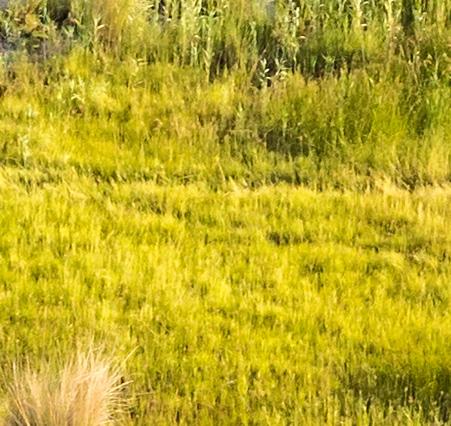
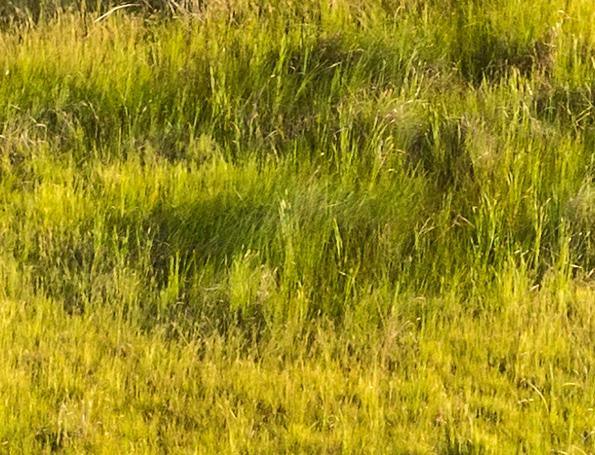




The new Fly-in Zambezi Lodge-Hopping Charter, in partnership with Gondwana Collection Namibia, will operate from July to November 2025 on a charter-only basis, providing seamless connections between lodges in Namibia’s Zambezi Region, Victoria Falls, and Maun. The aircraft will be stationed in Katima Mulilo, allowing for flexible, on-demand flights tailored to travel agents, tour operators, and private guests.
For more information or bookings, please contact reservations@westair.com.na


With over 70 years of experience, we stand as a trusted partner in Namibia’s legal landscape. From litigation to conveyancing and corporate law, we’re here to support you every step of the way.
Tel: +264 (61) 275 550 | Email: info@wkh-law.com | www.wkh-law.com



In a world increasingly obsessed with certainty and finished products, the exhibition Untitled offers something far more compelling: potential. Featuring four emerging Namibian artists – Nicole Schaller, Nghihaluka “Luka” Ndivayele, Stephnie Mans and Pontsho Kemba – this group show embraces open-endedness, first steps, experimentation and practice.
The name Untitled nods to the beginning of something significant – work still taking form, stories just beginning to be shared and artists finding their voice in a shifting cultural landscape. The exhibition, therefore, is an invitation for viewers to witness a moment of artistic unfolding.
Textile artist Nicole Schaller, born in Otjimbingwe and now based in Windhoek, shares a unique take on portraiture. Working primarily with hand embroidery on leather and hessian, Schaller’s pieces explore cultural identity, particularly that of the Damara people. Her art is steeped in tradition, yet deeply personal. “I was initially drawn to jewellery,” she recalls of her time at the College of the Arts, “but I found my way to textiles.” Her self-taught embroidery techniques began as decoration on garments and matured into a method of storytelling. “I’m exploring the lost culture through portraiture, restoring identity thread by thread.” Influenced by heritage sites in the Kunene Region and the Living Museum of the Damara, her work straddles history and the present, using colour to convey emotion, memory and resilience.
Luka Ndivayele, a painter working primarily in oils, describes his relationship with art as inevitable. “I was never really inspired – I just never saw myself doing anything else,” he says. Luka’s early obsession with black and white was born from both its visual clarity and a fear of colour, until a generous teacher’s gift of watercolours helped him unlock a more vibrant palette. Now a committed oil painter, Luka finds inspiration in the lives of others, especially stories that often go untold. As the grandson of a man exiled during Namibia’s struggle for independence, Luka says, “Some people fought for something they would never see. Their stories deserve to be told more than

mine.” His work quietly honours intergenerational sacrifice and the unseen narratives that shaped Namibia’s freedom.
In contrast, Stephnie Mans, a part-time art student and practicing physiotherapist, takes a deeply introspective approach. Her mixed-media works translate internal states of emotional terrain – grief, joy, longing – into texture, colour and form. “Art has always felt like a universal language to me,” she shares. “I’m fascinated by how something invisible like an emotion can become something visible, tangible.” Her work resists traditional definitions and thrives on experimentation. Whether layering materials or allowing chance to influence the outcome, Stephnie is driven by a curiosity about what lies beneath the surface of human experience.
At just 21, Pontsho Kemba’s oil paintings speak of identity, body politics and the evolving realities of womanhood. Influenced by her creative upbringing – her mother was a florist who surrounded her with craft and colour – she explains, “Painting lets me be loose. I can break the rules but still honour the academic side of art.” Her most recent pieces reflect on pregnancy and early motherhood, capturing the physical and emotional transformation with honesty and vulnerability. “Namibia is still very conservative when it comes to women’s stories,” she says, “but I’m proud to be part of a generation of female and queer artists telling our stories our way.”
Together, these four voices are shaping what the future of Namibian art could look like – vibrant, diverse and rooted in local experience. Untitled opened at The Project Room on Friday, 20 June and will run until Saturday, 19 July.

Laschandre Coetzee

Best of Nam is back, and it’s all about your voice. This annual showcase celebrates the very best that Namibia has to offer – as chosen by you. From local favourites and hidden gems to standout personalities and top-notch service, your vote helps shine a light on the people and places that truly make Namibia special. See below to explore this year’s categories and nominees, and don’t forget to vote for your favourites before 31 July 2025.





Where’s the best place to hit the gym?
• F45 Windhoek
• Tura Bootcamp
• Virgin Active Grove Mall
• Virgin Active Maerua Mall
• YAP Gym
Where do you go for sports and recreational activities?
• MTC Dome
• Namibia Padel
• SKW
• Tura Bootcamp
• Wanderers Sports Club
• Windhoek Country Club
Which pre-primary or daycare center gives little ones the best start?
• Busy Brains
• Delta Kindergarten
• Deutsche Höhere Privatschule Windhoek (DHPS) Kindergarten & PreSchool
• Palmpikkies Elnatan
• Pikkie Paradys
• Roots Gymnasium
Where would you send your child for a great primary school education?
• Delta Primary School
• Deutsche Höhere Privatschule Windhoek (DHPS)
• Pioneerspark Primary School
• Privaatskool Elnatan
• Roots Gymnasium
• Windhoek Afrikaanse Privaatskool
Which spa or wellness center helps you relax and recharge?
• Life Day Spa
• Meraki Spa
• Nomad Wellness Homestead
• Younique Day Spa
• Aesthetic Centre Olympia
Where do you get the best nail treatments?
• Am Epic Nail and Beauty
• Classic Nails by Helvi
• Le Dash
• Life Day Spa
• Meraki Wellness Center
Where do you think high schoolers get the best education?
• Delta High School
• Deutsche Höhere Privatschule Windhoek (DHPS)
• Privaatskool Elnatan
• Windhoek Afrikaanse Privaatskool
• Windhoek Gimnasium
• Windhoek High School
Where would you go for further studies or higher education?
• NUST
• UNAM
• Stadio
• IUM
Which vocational training center provides top-notch skills development?
• COSDEC Swakopmund
• NIMT
• Windhoek Vocational Training Centre

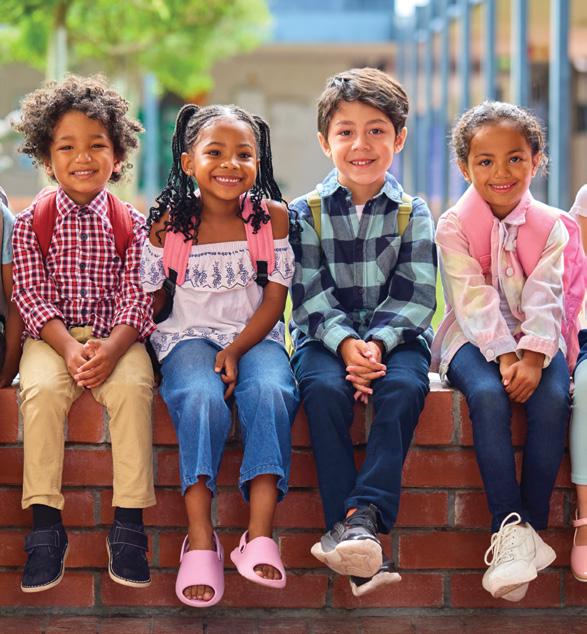
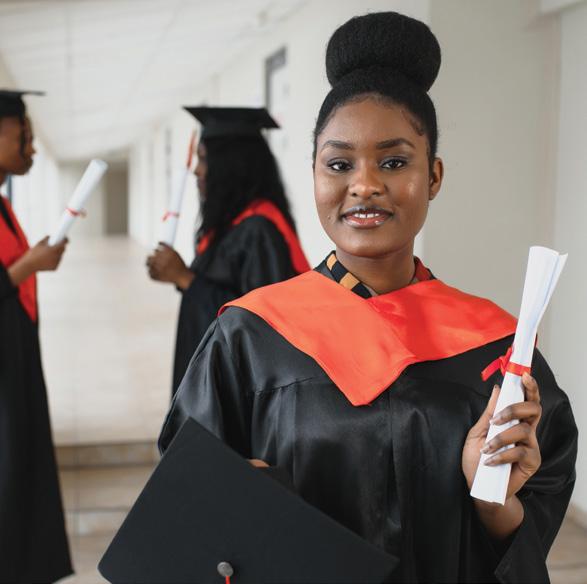
Which charity does the most for health and wellness?
• CAN – Cancer Association of Namibia
• Ebenezer Soup Kitchen
• Havana Charity Foundation
• N/a’an ku sê Foundation
• Zuzu Holding Hands Cancer Association
Which organization makes the biggest impact in education and youth development?
• Havana Charity Foundation
• Mondesa Youth Opportunities
• N/a’an ku se Foundation
• One Economy Foundation
• United Youth Charity Association
• Windhoek Rotaract
• Youth Orchestras of Namibia YONA
Who is leading the way in environmental conservation?
• N/a’an ku sê Foundation
• Namibia Nature Foundation
• Ocean Conservation Namibia
• Pangolin Conservation & Research Foundation
Which charity makes the biggest difference in social services and community development?
• Ebenzer Soup Kitchen
• Havana Charity Foundation
• N/a’an ku sê Foundation
• Nampharm Foundation
• Ruach Elohim Foundation
Which organization is doing amazing work in animal welfare?
• CAPU
• Have a Heart
• N/a’an ku sê Foundation
• Namibian Animal Welfare Association (NAWA)
• SPCA-Windhoek
• Tierschutzverein Swakopmund
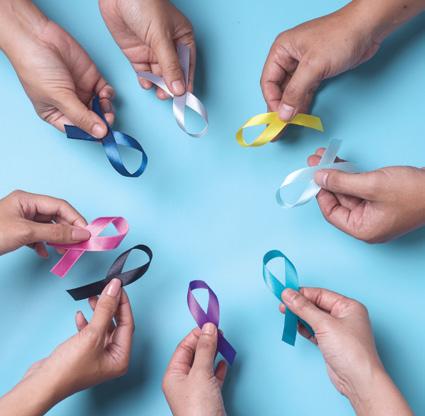

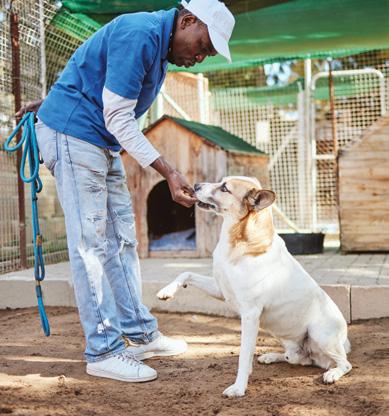
Where do you go for the best nightlife and drinks?
• Bar Zonder Naam Swakopmund
• Mynt Nightclub Windhoek
• Sky Lounge Am Weinberg
• Goodfellas Pizza & Pub
Which coffee shop serves the best brew?
• Miena’s Market
• Mugg & Bean
• Seattle Coffee
• Slow Town
Where’s your go-to bottle store for your favorite drinks? Where do you get your dop for the weekend?
• Checkers Liquor
• Embassy Bottle Store
• Keurwyne Liquor Store
• Metro Liquor
• Tops Spar
Where do you pop in for a quick drink at your local neighborhood pub?
• Nico’s Pub & Grill
• Chicago’s Bar & Restaurant
• Goodfellas Pizza & Pub
• The Beat
• Andy’s Pub & Restaurant
• Hennie’s Windhoek
• Stammtisch Heritage Pub Swakopmund
• The Wolfshack
Where do you pop in for a quick drink at your local neighborhood pub?
• Nico’s Pub & Grill
• Chicago’s Bar & Restaurant
• Goodfellas Pizza & Pub
• The Beat
• Andy’s Pub & Restaurant
• Hennie’s Windhoek
• Stammtisch Heritage Pub Swakopmund
• The Wolfshack

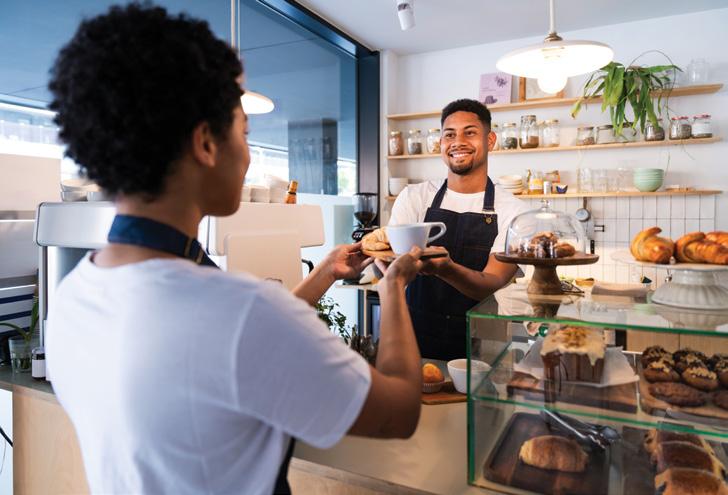
Where do you shop for the latest fashion trends?
• Edgars (Grove Mall)
• Foschini (Grove Mall)
• Mr Price (Grove Mall)
• Pfohls Fashion
• Woolworths (Grove Mall)
• PEP
• Ackermans
Where do you go to buy locally made fashion or lifestyle products?
• Leon Engelbrecht Designs
• Namibia Craft Centre
• Pfohls Fashion
• Shilongo Leather Works
Where do you do your weekly grocery shopping?
• Checkers
• Shoprite
• Metro Fresh
• Superspar
• Woermann Brock Supermarkets
• Woolworths
Where’s the best place to find fresh produce?
• Food Lovers Market
• Metro Fresh
• Superspar
• Woolworths
• Checkers


Where do you go for all your hardware and DIY needs?
• Agrimark
• Ark Trading
• Build it
• CYMOT
• Pupkewitz Lifestyle
• Pupkewitz Megabuild
Where do you buy home appliances?
• @Home (Grove Mall)
• Game
• Hifi Corporation
• Nictus
• OK Furniture
• Pupkewitz Megabuild
• Metro Home
Which shopping mall or center is your favorite?
• Dunes Mall
• Grove Mall
• Maerua Mall
• Oshana Mall
• Platz am Meer
• Wernhil
Where’s the best neighborhood convenience store?
• Expressmark
• Klein Windhoek Supermarket
• Metro Supermarket
• (Baines) OK Foods
• Spar (Klein Windhoek)

Which Namibian musician do you love the most?
• Big Ben Kandukira
• Gazza
• MGee
• Msunday
• Yeezir
Which local sports star makes you proud?
• Beatrice Masilingi (Athletics)
• Christine Mboma (Athletics)
• Deon Hotto (Football)
• Peter Shalulile (Football)
• Gerhard Erasmus (Cricket)
• Vera Looser (Cycling)
Which band always puts on a great performance?
• Big Ben band
• Hotpocket Band
• One Blood
• The Ell’s
• The Yesterdaye



Who is the funniest local comedian?
• Joh White
• Kyle Routh
• Martin Pombili
• Moyo The Comedian
• Neville Basson
• Oc Ebs
• Zita
• Slick
Which influencer do you follow for great content?
• Adriano Visagie
• call_me_nesto
• Dillish Mathews
• Hermien Elago
• Maria Nepembe
• Reinhard Mahalie
• Twinfluencers
Which visual artist creates the best work?
• Hage Nasheotwalwa
• Kula-Jose Rodrigues
• Laten Kotini
• Nicky Marais
Which lodge or safari camp offers the best experience?
• Desert Grace
• Etosha Safari Lodge
• Midgard Country Estate
• Naankuse Lodge & Wildlife Sanctuary
• TimBila Camp Namibia by Naankuse
Which hotel do you love staying at?
• Avani
• Hilton
• Naankuse @ Utopia Boutique Hotel
• Strand Hotel Swakopmund
• The Delight Swakopmund
• The Weinberg
Where do you go for a cozy bed & breakfast stay?
• Arebbusch Travel Lodge
• Atlantic Villa Boutique Guesthouse
• Droombos
• Klein Windhoek Guesthouse
• Naankuse @ Utopia Boutique Hotel
• Sea Breeze Guesthouse
Where’s your favorite weekend getaway spot?
• Naankuse Lodge and Wildlife Sanctuary
• Gross Barmen


• Kalahari Anib Lodge
• Midgard Country Estate
• Mokuti Etosha Lodge
• Lake Oanob
Where’s the best place to pitch your tent and camp?
• Etosha Safari Camp
• Etosha Trading Post
• Kanaan Naankuse Desert Retreat
• Spitzkoppe
• TimBila Camp Namibia by Naankuse
• Urban Camp
Where can you enjoy a luxurious ‘glamping’ experience?
• Desert Hills Glamping
• Etosha Safari – Camping2Go
• Kalahari Anib – Camping2Go
• Timbila Camp Namibia by Naankuse
• Urban Camp
Which travel agent do you trust to plan your trips?
• Gondwana Collection Travel Centre
• Season Travel and Tours Nambia
• Travel Hub
• Trip Travel
• XL The Travel Professionals

What’s your go-to ride or taxi service?
• City Cab
• Dial-a-Cab
• InDrive
• LEFA
• Yango
Where do you go for all your bicycle needs?
• Cycledelic
• Cycletec
• CYMOT
• Game
• Mannie’s Bike Mecca
Where do you go for new tyres or car maintenance?
• Best Drive
• Dunlop Zone Tyrepro Windhoek
• Supa Quick
• Tiger Wheels & Tyres
• TrenTyre
• Super Tyres




Where do you find the best deals on second-hand cars?
• Auas Motors
• Autohaus Windhoek Preowned
• Indongo Toyota Otjiwarongo
• Jan Japan Motors
• Pupkewitz Auto Windhoek
• Pupkewitz Volkswagen North
Who do you rely on when you need to rent a car?
• Avis
• Europcar
• Mufasa Car Rental
• Namibia2Go
• Zambezi Car Rental
Which fuel station do you always stop at to fill up?
• East End Service Station
• Engen Olympia
• Puma Klein Windhoek
• Puma Nelson Mandela
• Shell Tacoma
• TotalEnergies Wika
Who do you trust to fix your car after an accident?
• Auto Care Centre
• Blue Chip Panelbeaters
• PZN Panelbeaters
• Rabe’s Body Repairs
• Star Body Works
Where would you go to buy a brand-new car?
• Auas Motors
• Indongo Toyota Windhoek
• Pupkewitz Motors
• Pupkewitz Toyota
• Pupkewitz Volkswagen North
• Zimmermann Garage
• Autohaus
• Novel Ford
Where do you take your car for a reliable service or repairs?
• Auto Repairs Etzold
• Autohaus Windhoek
• Indongo Toyota
• Pupkewitz Motors
• Pupkewitz Toyota
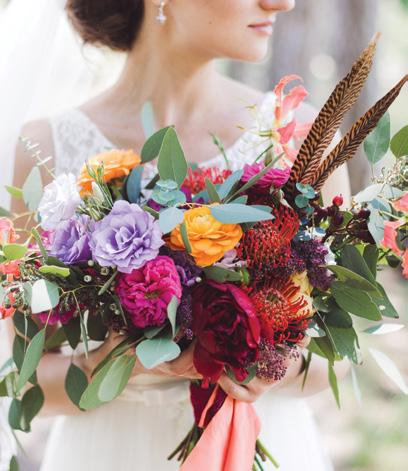


Where in Nam would you host the wedding of your dreams?
• Ankawini Safari Lodge
• Droombos
• Midgard
• Out of Nature
• Windhoek Country Club
Where do you go for top-notch conferences or corporate events?
• Am Weinberg
• Avani
• Droombos
• Mercure Hotel
• Windhoek Country Club



Which insurance company gives you the best service?
• Hollard
• King Price
• Momentum
• Old Mutual
• Sanlam
• Santam
Where do you bank for the best experience?
• Bank Windhoek
• FNB
• Nedbank
• Standard Bank
Which law firm do you trust the most?
• BB Boois Attorneys
• Dr Weder Kauta Hoveka Inc
• FQP
• Kadhila Amoomo Legal Practitioners
• Sisa Namandje & Co
Where do you go for top medical and health services?
• CMC Private Hospital
• Lady Pohamba Private Hospital
• Medi-Clinic Windhoek
• Welwitschia Hospital
Who serves up the best meals at weddings or big celebrations?
• Droombos
• Primangela Catering
• Sage by Hantie
• Savage Eats Catering
• Sunset Events and Catering
• The Taste Academy (Rhona Strauss)
Where do you go for the freshest and most beautiful flowers?
• Ambre and Ash Artisan Floristry
• Blumen Margot
• Floral Expressions
• Flowered Earth
• Woolworths
Best Medical Aid
• NHP
• NMC
• Renaissance Medical Aid (RMA)
• Nammed
• Methealth
• OSH-Med
• Heritage Health
Which pharmacy is your go-to for medication and wellness products?
• Dischem
• International Pharmacy
• Langerhans
• Pioneerspark Pharmacy
• Victoria Pharmacy
Who is the most reliable internet provider?
• Click Namibia
• Echo Namibia
• MTC
• Paratus
• Telecom
Which courier service never lets you down?
• Coastal Couriers
• DHL
• Formula Courier Services
• Nampost
• Speedpoint Deliveries
Which plumbing company do you trust for home or business repairs?
• Amalgamated Plumbing
• Polka Plumbing
• Ruan’s Plumbing
• Sharky’s Maintenance
Where do you go for electrical services that get the job done?
• DA Services
• Otto’s Electrical Services
• Sharky’s Maintenance
• Vollmond Electrician
• NamLeak
Who offers the best IT support services?
• BCX Namibia
• CES Namibia
• Cubix IT
• IT Guru Solutions
• Salt Essential IT
Which accounting or audit firm do you trust with your finances?
• BDO
• Deloitte
• Echelon Financial Group Namibia
• PKF Financial Consulting Services (Pty) Ltd
• PWC
Where do you take the family out for a great meal?
• Droombos
• Butcher’s Block
• Goodfellas Pizza & Pub
• RocoMamas
• Spur Grove Mall Windhoek
• Spur Maerua Lifestyle
Where’s the best place for sushi or Asian cuisine?
• Andy’s Seafood Swakopmund
• Cape Town Fish Market
• Cassia Thai Restaurant Windhoek
• Daisho Sushi & Wine Bar
• Seoul Food
• Yang Tze
Who serves the freshest seafood in town?
• Anchor’s Walvis Bay
• Cape Town Fish Market
• Fork n Nice Swakopmund
• Ocean Cellar Swakopmund
Where’s your go-to pizza spot?
• Debonairs Pizza
• Droombos
• Gabriela’s Pizzeria
• Goodfellas Pizza & Pub
• Panarotti’s
• Pizza Inn
• Roberto’s Pizzeria
Where’s your favorite spot for a hearty breakfast or bistro-style meal?
• Droombos
• Wilde Eend Bistro
• Wimpy
• Jonno’s Bistro
• Mugg & Bean
• Olivia’s Kitchen
• The Village Garden
Where do you go for the best kapana experience?
• Bra Q’s
• Cousin Kapana
• Dolce & Kapana
• Single Quarters


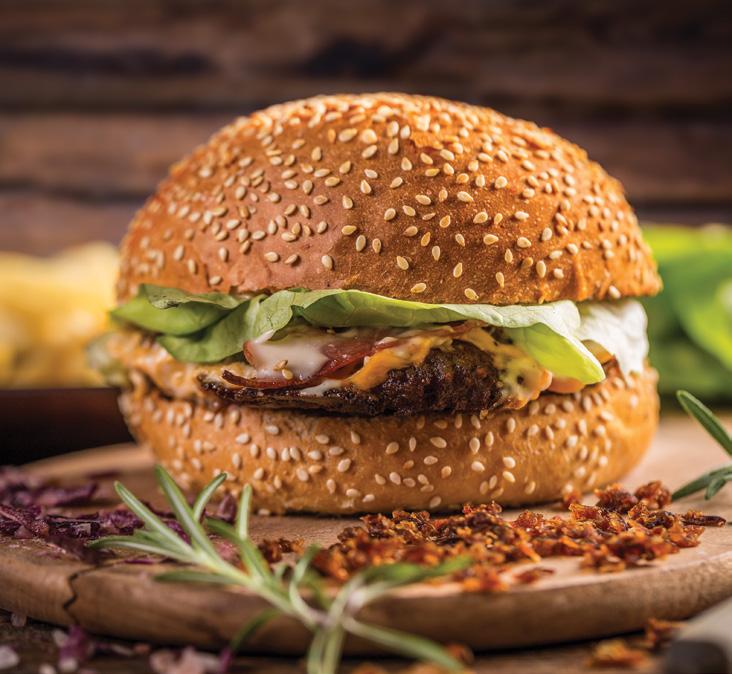


Who makes the juiciest ribs in town?
• Butcher Block
• Droombos
• Goodfellas Pizza & Pub
• RocoMamas
• Spur
Where do you go for a topquality steak meal?
• Brewer & Butcher
• Butcher’s Block
• Droombos
• Joe’s Beerhouse
• Spur (Grove Mall Windhoek)
• Spur Maerua Lifestyle
• The Stellenbosch Wine Bar
Where do you get the best slap chips?
• OK Baines
• Hakahana Service Station
• Klein Windhoek Supermarket
• OK Foods, Game Centre, Windhoek
• Steve’s Take-Away Walvis Bay
Who serves the tastiest burgers?
• Butcher Block
• Droombos
• Goodfella’s Pizza & Pub
• Hungry Lion
• RocoMamas
• Spur (Maerua Lifestyle)
Where do you buy the best biltong?
• Biltong & Bites
• Closwa Biltong
• The Biltong Shop
• Oasis Food Stall Usakos
• Wilhelmstal Padstal
Where do you always go to get your weekend braai meat?
• Beefcor
• Foodlover’s market
• Friedel’s Rand Street Butchery
• Hartlief
• Klein Windhoek Schlachterei
• Superspar Maerua Lifestyle


Iam fortunate to be given a lot of freedom in what I can choose to write about for this magazine, or what I can talk about on my radio show. But it does not take a genius to understand that there are certain topics you should just avoid! And, sadly, that list is growing.
Apart from the traditional wisdom that one should never talk about money, politics or religion, there are numerous other topics that have lately become so divisive that they are just not worth raising, for example Donald Trump, Elon Musk, trans athletes, or Israel vs Palestine. If I were to write about any of these, it would not matter which position I took for a large number of people to be upset or offended. As a result, more and more of us (not just columnists and radio DJs but you, and probably the person sitting next to you too) have learnt to practice self-censorship.
We increasingly decide that, while we may have an opinion on something, it is not worth expressing it, be it in a column such as this one, on social media, or even at a braai with friends or at the dinner table with your parents. After all, opinions can have realworld implications these days. Former England football player-turned-commentator Gary Lineker was forced to step down as the long-running host of the Match of the Day show on BBC, in large part due to opinions he expressed about the situation in Gaza – opinions he did not even express on the show itself, but on his private X (formerly Twitter) account. ABC News veteran Terry Moran, who famously interviewed US President Donald Trump in April when the two clashed over tariffs, deportations and a clearly doctored photograph, was suspended for labelling Trump and White House aide, Stephen Miller, “world-class haters” (the wisdom of which is definitely questionable, but the US does after all pride itself on the First Amendment – a fact that was driven home to me in great detail during the Edward R. Murrow Press Fellowship I undertook in the country. And then, of course, there was the furore that surrounded Disney’s liveaction adaptation of Snow White which, according to many, was doomed to failure by the political views and social media posts of lead actress Rachel Zegler.
that it is actually one of the main factors leading to an increase in self-censorship. Jonathan Day, writing for The Civil Liberties Union for Europe, explains that “researchers have found that social media helps grow a phenomenon known as the ‘spiral of silence’ – when individuals suppress their own views if they think they differ from those of family, friends or colleagues”. Or, as Matthew Legge writes in his popular blog for Psychology Today, people worry that if they “say the wrong thing, [they run the] risk [of] identifying [themselves] as part of an ‘enemy’ camp on any issue in the news”.
When we don’t have access to the information that others hold –because they’re censoring themselves and not sharing it – we all lose out on naming problems and finding better-quality solutions.
Admittedly, there may not be any real harm in me choosing not to write about a certain topic in this magazine when I feel that it is not something you would necessarily want to read about while enjoying your flight. Nor is any damage done when I decide to avoid a certain topic on the radio because, even though I may find it interesting, I know that many people on their way to work are not tuning in for that kind of discussion. However, there is an underlying danger when people increasingly selfcensor their thoughts and expressions. As Matthew Legge explains: “When we don’t have access to the information that others hold – because they’re censoring themselves and not sharing it – we all lose out on naming problems and finding betterquality solutions.”
While I do not have a solution to offer (nor could I find one in any of the many journals, magazines and opinion pieces I drew on when writing this column), we clearly need one because – to end on a dramatic note – as Daniel Bar-Tal says in the journal Advances in Political Psychology: “Selfcensorship has the potential of being a plague that not only prevents building a better world, but also robs its performer of courage and integrity.”
Until next time, enjoy your journey (and try to self-censor yourself a little less).
David Bishop
The bitter irony is that, while social media is often seen as a tool to allow for greater expression, researchers have found

Having explored much of Namibia, from the south to the central regions and even the far north, the remote Kunene Region has always held a special fascination for me.
I have travelled to the dusty and bustling capital of Opuwo and visited the iconic Epupa Falls, but it is the areas in between –the long, quiet stretches of road scattered with rock and desert – that have always remained a mystery. Until recently.
Situated in the Kunene Region on the western edge of the Etendeka Plateau, Grootberg Lodge is perched at the very edge of the plateau, its valleys and layered escarpments extending across the surrounding, semi-arid landscape.
Departing from the small town of Kamanjab, the journey follows the C40 gravel road towards Palmwag. After 97 kilometres, the road suddenly signals a dramatic ascent, winding sharply up the escarpment to reach Grootberg Lodge. Due to the steep gradient, narrow bends and sheer drop-offs, the final stretch is reserved for skilled 4x4 drivers only. If you do not feel confident tackling the ride yourself, rest assured! Guests are met at the base of the mountain by a lodge guide or staff member, who handles the drive to the top. Vehicles remain safely parked under 24-hour security at the foot of the pass.
The climb is an experience in itself. Gravel and loose stone crush beneath our tyres as the 4x4 powers upward, revealing ever-expanding views of a Namibia I have never seen before. Upon arrival, we are welcomed with open arms, home-made iced tea and an opportunity to enjoy panoramic vistas from the lodge’s spacious dining room and deck.
Still weary from our travels, we are taken to the lodge’s accommodation. Nearly blending into the environment, snug stone-built, thatched-roof chalets are tucked along the edge of the mountain, offering scenic views of the expansive mountain range. Each chalet includes a private deck, perfect for soaking in the off-the-grid wilderness. As a trailblazer in sustainable eco-tourism, Grootberg Lodge operates entirely on solar energy. After a couple of lazy hours spent enjoying our private view and even indulging in the lodge’s daily tradition of coffee and cake, we are finally tempted to leave the cosy comforts of the lodge for a sundowner.
Skies dipped in gold
The Grootberg Plateau lies at an elevation of 1,551 metres and overlooks the Klip River Valley, on the eastern edge of the Etendeka Plateau. Yet some parts hardly resemble a mountain peak – we drive by broad swatches of flat carpeted plains, and no wonder, because Etendeka means “hill with flat top” in the Himba language.
Yellow and purple wildflowers bloom amid tall bushman grass, the landscape lush following Namibia’s abundant rainfall. Rosy-faced Lovebirds and Pale-winged Starlings gather in a verdant mopane tree (one of many native to this region), settling on its distinctively butterfly-shaped leaves. Apart from a herd of springbok spotted on the way, we note the visible absence of other wildlife, particularly antelopes such as gemsbok, kudu and klipspringers. But this is not bad news. In fact, we are told it is a result of the high rainfall this season. The animals have simply moved from the highlands down into the lowveld, where grazing is more plentiful.
Approaching the viewpoint, I am taken aback by the sky’s glimmering gold, with mountains and valleys stretching as far as the eye can see. We happen to all be locals on the sundowner trip. Wonderstruck, we exchange looks of disbelief, as if to say, “Is this really our Namibia?” For a moment, we simply stare, taking in the beauty.
Gradually, the horizon fills with soft hues of pale blue blending into fading, cool light. As the sun slips over the mountain, the temperature immediately drops. We snap a few last photos and take a final swig of gin and tonic served from a table generously laid out with snacks and refreshments, before clambering back onto our safari truck.
Back at the lodge, tender gemsbok steak is served, the dining room aglow with heaters and guests’ animated chatter. Later, we fall asleep to the sound of wind rustling through shepherd’s trees.
Elephant’s Corner
Part of the ≠Khoadi-//Hôas Conservancy (also known as “Elephant’s Corner”), Grootberg is the first lodge to be entirely owned by a communal conservancy – a legally registered area with clearly defined borders, managed by the local community for the development of residents and the sustainable use of natural resources and wildlife. Since its registration in




1998, the conservancy has been dedicated to protecting the area’s singular ecology and cultural identity. It was also the first conservancy in the region to reintroduce black rhinos and black-faced impalas. To help mitigate the impact of human-wildlife conflict, the Predator’s Fund was created to compensate farmers for livestock lost to predation. The lodge contributes to this fund by donating a fee for every predator sighting reported by guests.
Thanks to the conservancy’s collective efforts, the population of rare desert-adapted animals continue to roam freely, offering visitors a remarkable opportunity to observe these endangered mammals in their natural habitat. Desert elephant and rhino tracking is one of the signature excursions offered by the lodge. It is worth mentioning that sightings are never guaranteed, but that is all part of the adventure!
Keeping that little disclaimer in mind, we headed out early the next morning to track elephants. After a hearty breakfast buffet, we bundled up in oversized ponchos to shield ourselves from the blustery mountaintop wind. Specific to this area, the elephants are leaner and taller compared to their pachyderm counterparts in regions with more bountiful vegetation. They also possess wider feet for navigating the sandier terrain more easily. These elephants are known for their impressive memory and intelligence, enabling them to remember the locations of water sources and food supplies over vast distances. This knowledge is crucial for their survival in an environment like northwestern Namibia, where resources are scarce.
“Can you hear that?” Our guide, Ernst, slowly trails behind our tracker in the truck, scanning the road for fresh tracks and listening carefully. Naturally, we hear nothing, our ears untrained and unfamiliar, except for the sound of the howling wind. The tracker, though, deftly discerns subtle signs: the rough bark of a tree stripped clean by a dexterous tug of an elephant’s trunk, with branches snapped and strewn along the road like breadcrumbs. We stop at our first waterhole, where Ernst points to a fresh pile of elephant dung. Fibres from mopane leaves are clearly identifiable, meshed into the remnants of a magnanimous meal (the tree’s protein-rich leaves provide a steady staple for these gargantuan guardians).
At this point, we might have been close to finding them, but I was beginning to doubt that we would catch sight of anything at all. After hours of what felt like circling around quiet


waterholes and combing tracks nearly swept away by the wind, my husband suddenly lets out a whistle and the truck screeches to a halt. At last, we get a glimpse of them – a family of twenty, all females, nearly hidden by the mopane woodlands.
Desert-adapted elephants are highly social animals that live in matriarchal herds, usually made up of related females and their offspring. These groups are led by a matriarch – the oldest and most experienced female – who plays a crucial role in navigating the herd to essential resources such as food and water. As males mature, they typically leave the herd and lead solitary lives or join small groups of other males, known as bachelor herds.
We waste no time. Ernst reverses, makes a sharp turn and follows the herd as they start to trudge towards the waterhole. We wait, cameras cradled in our hands, eyes peeled. Our anticipation builds as hazy brown figures in the distance emerge, transforming into majestic creatures. Trunks lift up in unison to lap up water, and younger ones are nudged closer. “Look, the matriarch is protecting her herd,” Ernst whispers in a low voice. She flaps her ears and stomps her feet, asserting her dominance. We keep our distance, admiring from afar. Fiercely protective, yet seemingly particular about their private space, the whole herd huddles behind a grove of trees to bathe, slinging mud over their backs. “They are shy, just like us!” We respectfully, albeit reluctantly, retreat to give them privacy. The wait has been well worth it. A front-row seat to nature’s own nobility.
To mark the moment, we linger for a final treat: a celebratory picnic lunch enjoyed beneath the shade of a shepherd’s tree. Talk amongst us drifts to grey, drizzly European skies and looming to-do lists awaiting everyone’s return. But for now, nestled into camp chairs, we embrace the stillness far from city life.
The steady rise back to Grootberg Lodge begins. I close my eyes and picture it clearly: the sweeping views of the valleys, waiting to welcome us back, stretching far into what feels like eternity.
Madeleen Duvenhage
To book your stay at Grootberg Lodge, visit: www.journeysnamibia.com
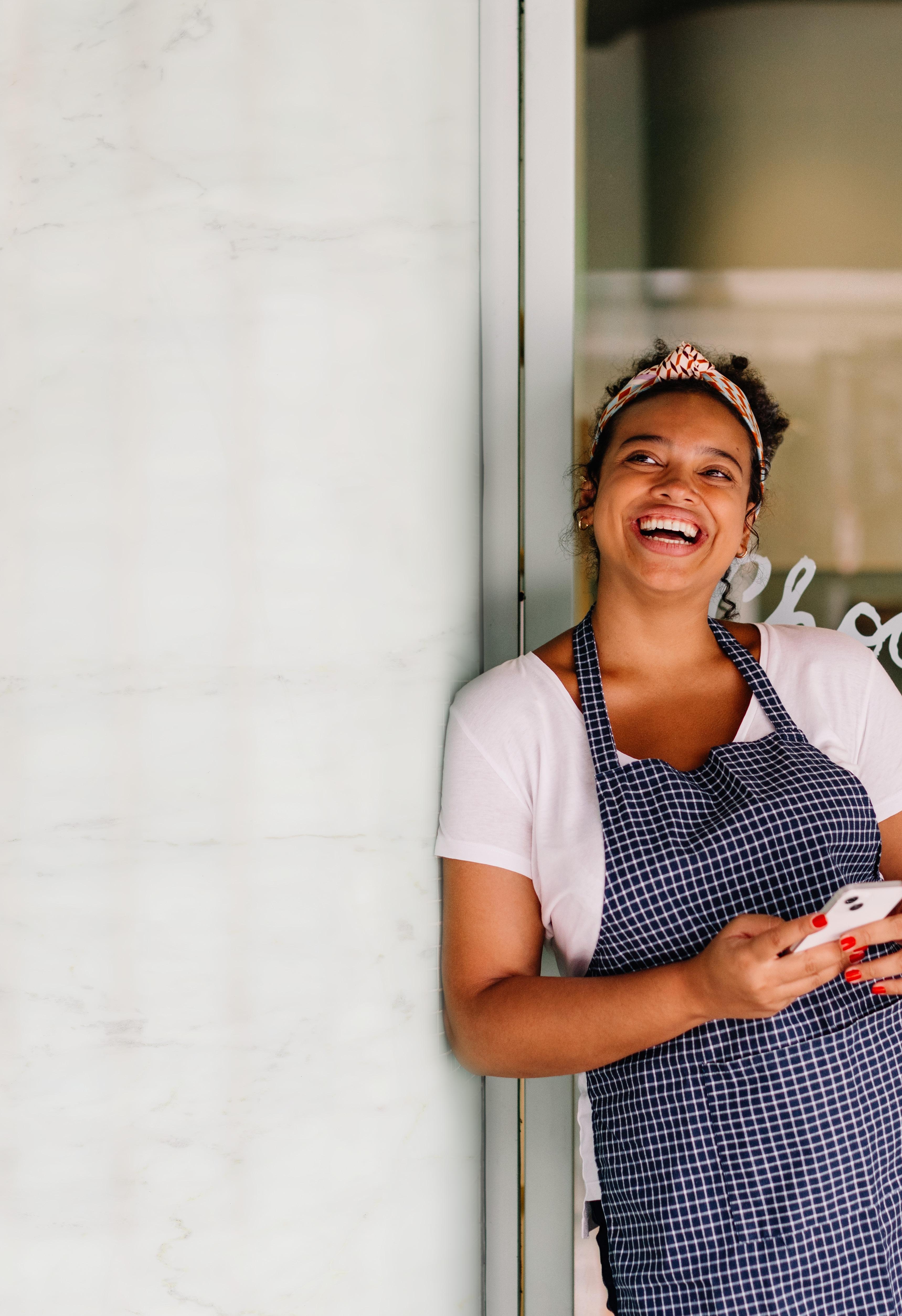
FNB’s H.E.R Banking empowers female entrepreneurs with a suite of tailored financial solutions, dedicated and personalised support and exclusive networking opportunities. We believe that the right help changes everything for women in business. With specialised services including Gold, Platinum, PSB and Enterprise Business cheque accounts and a Women’s Hub, we’re committed to helping your business thrive.




Scientific name: Diospyros Mespiliformis
Common name: Jackalberry
Jackals probably loved the fruits of this tree, hence it is commonly known as the jackalberry tree. Humans love it too, though. This evergreen tree, which can grow up to 16 metres tall, has a broad crown and medium-shaped leaves. It loves water and can be seen in the open plains of northern Namibia, often surrounding natural earth dams. This imposing tree with its beautiful silhouette is one of the most photogenic trees for sunset pictures.
The jackalberry tree has simple leaves that are quite smooth and a scaly grey bark with hard wood. Although not a particularly popular wood, it can be used as firewood, or to carve kitchen utensils and canoes. Unlike the gigantic baobab tree, which bears big flowers, the flowers of the jackalberry tree are tiny, creamy in colour and bear spherical fruits which are edible. These berries vary in size, but they are not bigger than marula fruits. They grow between January to August, and the fruits turn from green to brown when they are ripe. The berries are sold in open markets or at festivals and form part of the circular economy within our rural areas.
The berries are naturally sweet and can be eaten either moist or dried. The common practice among rural communities is to collect these berries while moist and then dry them for later consumption. While humans collect the berries, livestock such as goats, sheep and donkeys snack on these berries too. Birds also enjoy snacking on this sweet fruit. I have heard of people making a traditional beverage from these fruits. Enthused by the ancestors’ ability to brew something from almost any fruit, this is a tasting treat that I have put on my bucket list.
Trees that bear edible fruits are my favourite, but trees that have a personal story attached to my childhood are unforgettable. I can recall the very first memories of my village kindergarten at the tender age of three in the mid-nineties. A very big jackalberry tree was near the kindergarten and it is

still standing tall today. That tree provided us with shade and served as our playground. Today certain community meetings are still held under it.
Jackalberry trees are resilient and live for quite a long time. Most of the ones I remember seeing in my village and nearby villages during my younger years are still alive. Their distribution seems to be quite stable, with a minimal decrease in population of this particular species. Although they still bear fruit, quite a decrease in fruiting can be observed in some trees. Some of these trees’ fruits no longer taste the same, while other trees have almost entirely stopped fruiting. In most cases, it is either lightning strikes or ageing that causes the trees to die, with little to no visible natural regeneration.
The jackalberry tree is amongst the few trees in Namibia being underutilised, but they offer ecosystem services to communities with less threats to humans compared to other trees. Owing to its nature of loving water in abundance and often existing in proximity of rivers or natural earth dams, they thrive well regardless of the lack of natural regeneration. The thought of planting jackalberry trees has never crossed my mind, but the fact that it contributes to the circular economy would be a valid reason for trying to sow seeds and consider reforestation. This is a trial still to be explored. As the common saying goes: “The best time to plant a tree was 20 years ago, the second-best time is now.”
Agnes Shekupe Shivute
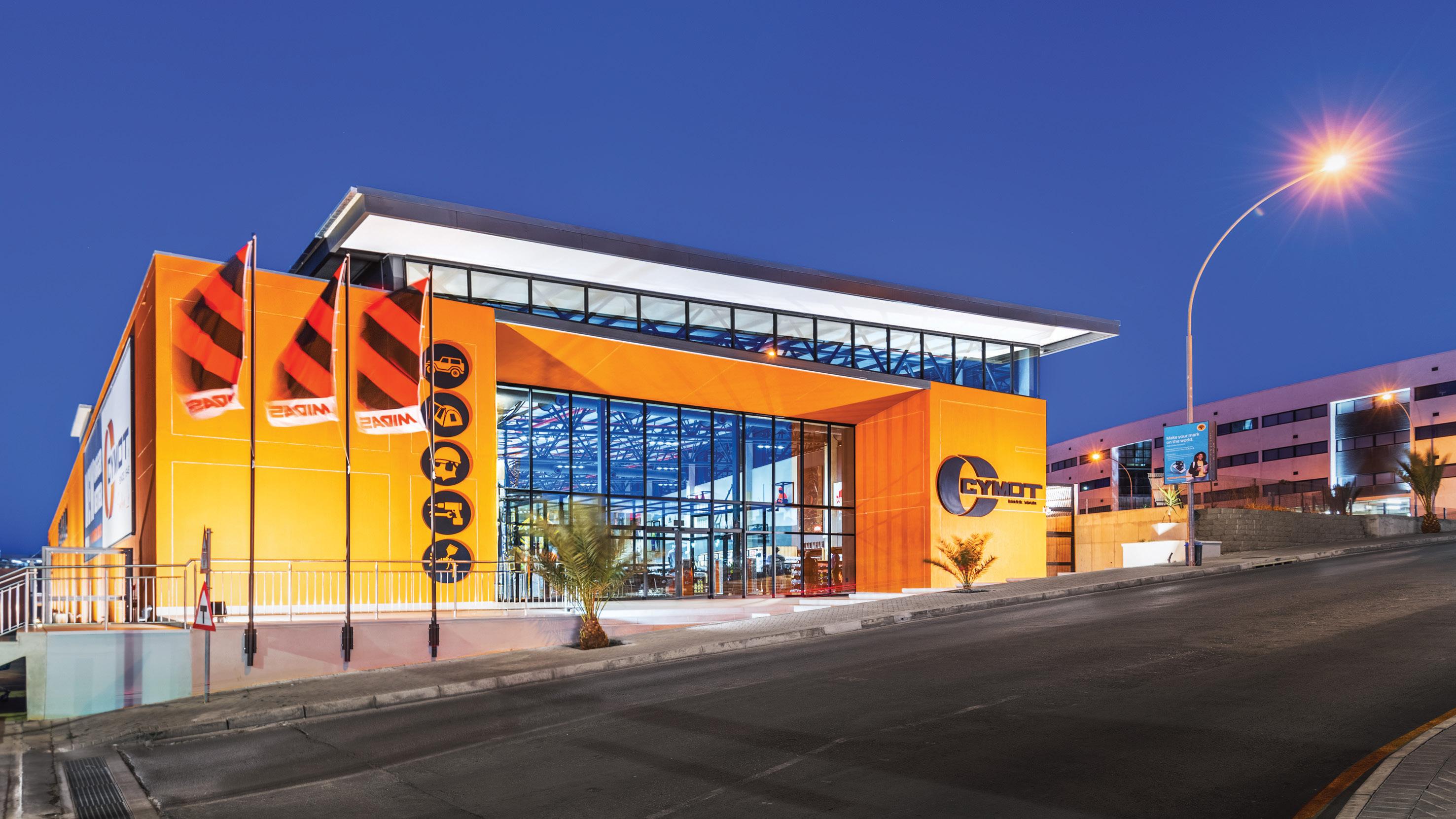





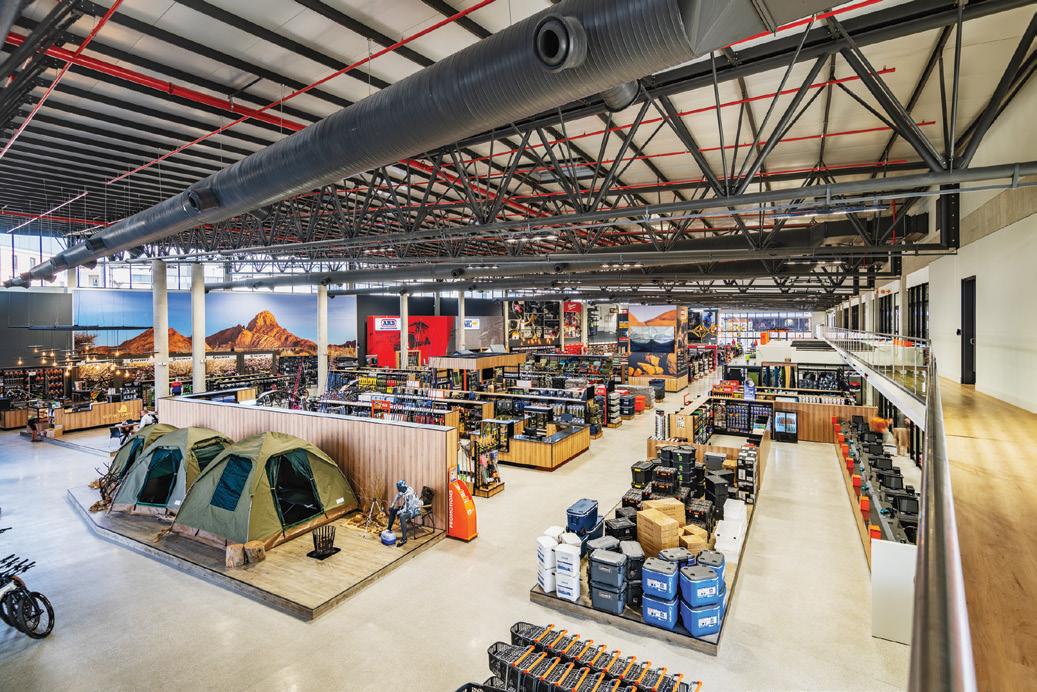

Whether you're on business or exploring Namibia, CYMOT Hilltop has everything you need under one roof!
Conveniently located next to Grove Mall in Windhoek, we make shopping easy, hassle-free, and enjoyable.
Start your journey with the perfect cup! Fuel up with the rich



The desert wind howled across the plains, sculpting the landscape and teasing our resolve, but over four extraordinary days in Namibia’s remote northwest, we were reminded again and again why we ride.
The 2025 RMB & Wilderness Ride for Rangers took us deep into one of Africa’s last true wilderness areas, across stark valleys, dry riverbeds, and golden savannahs that pulse with life and silence in equal measure. Though the wind was relentless, nature offered its own kind of encouragement. Every morning began with a spectacular sunrise, every evening was bathed in the soft glow of a desert sunset, and every moment in between was filled with movement, discovery, and awe.
This ride was more than just a physical challenge. It was a celebration of the rangers, game guards, and communities who protect this land and its wild inhabitants. Formerly known as Ride for Rhinos, this annual cycling tour has entered a new chapter. Ride for Rangers honours the boots on the ground –the individuals who dedicate their lives to safeguarding the black rhino, desert-adapted elephants, lions, hyenas, and countless other species that call this landscape home.
On day one, as if nature itself was welcoming us, we encountered a herd of elephants in the Hoanib River. Young calves tumbled gleefully down sandy embankments while the adults ambled slowly behind them, unhurried and serene. For many of us, it was our first time seeing elephants so relaxed, so close, so alive in their element.
The cycling was tough. Some climbs seemed endless, the gravel unforgiving, and the sun unrelenting – but it was all worth it. Each day ended around a crackling fire under a full moon, where conversations flowed as freely as the laughter. We spoke of Namibia, of its people and wild spaces, of conservation victories and the challenges that remain. The stories shared were as powerful as the landscapes we had crossed.
One afternoon on a nature drive, we witnessed something truly special: a lone black rhino browsing quietly among the brush. We kept our distance, respectful and still, sipping gin sundowners as the animal moved unaware of our presence. To observe a rhino like this – in peace, undisturbed – felt like a blessing. A rare privilege. A reminder of what’s at stake.





We also spotted giraffe among Ana and Shepherd’s trees, zebra camouflaged against the stones, springbok darting across the plains, and even an aardwolf that darted across our path at dusk. Each sighting added a new layer to the story we were living — wild, unscripted, and deeply moving.
On our final day, we were joined by Emsie Verwey, researcher and head of the Skeleton Coast Brown Hyena Project based at Wilderness Hoanib Skeleton Coast Camp. Her talk offered a fascinating glimpse into one of Namibia’s most elusive carnivores and reminded us that conservation doesn’t stop with the charismatic megafauna. Every species matters. Every effort counts.
The RMB & Wilderness Ride for Rangers is not just a tour. It’s a journey of purpose, created
We spoke of Namibia, of its people and wild spaces, of conservation victories and the challenges that remain. The stories shared were as powerful as the landscapes we had crossed.

by Venture Media, supported by committed sponsors – RMB Namibia, Wilderness, and CYMOT – and made possible through the generosity of many. We are deeply grateful to Superspar for sponsoring all the groceries that sustained us and to The Taste Academy’s Rhona and Louis, whose incredible bush catering amazed and brought warmth and joy to every meal.
Above all, we thank the riders and participants who joined the 2025 ride. Their grit, laughter, generosity, and shared passion made this journey what it was – a tribute to the guardians of the wild and a love letter to Namibia.
Elzanne McCulloch
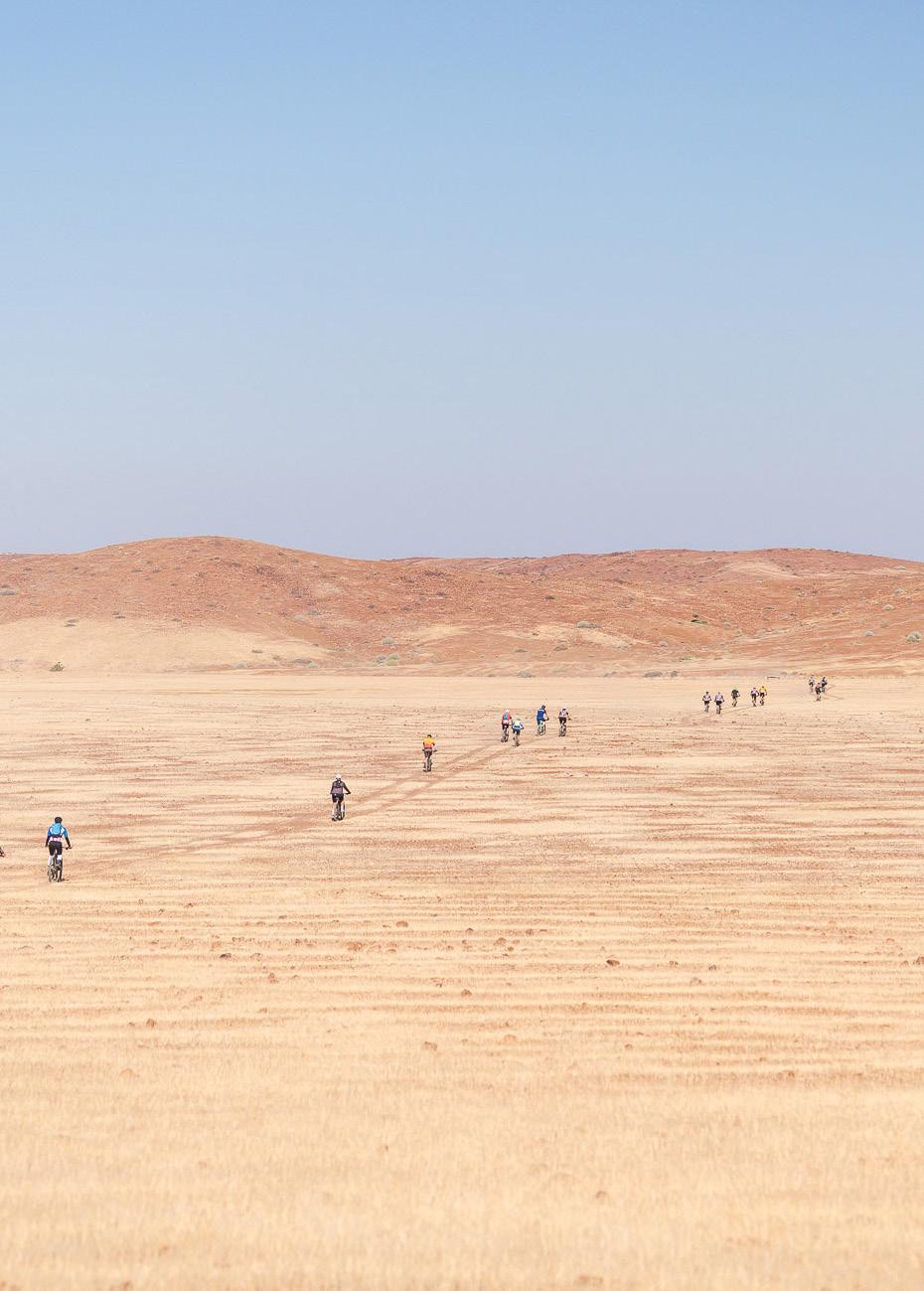
In Namibia’s northwest, the land is ancient. Harsh. Vast. Sacred. Here, the sun burns gold over basalt mountains… and the wind carries stories older than memory. This is one of the last true wildernesses.
It’s here that giants roam and species claw for survival Hyena and lion battle the elements, Giraffe meander across vast distances Desert-adapted rhinos and elephants, shaped by time, surviving against the odds. But survival isn’t luck. It’s legacy. And legacy needs guardians.
We ride for them. The rangers. The trackers.
The quiet heroes in dust-stained boots, who know every footprint, every call, every movement in the silence. They don’t do it for glory. They do it because they must.
Namibia has become a beacon,
A global example of how community, conservation and courage can come together to protect what’s rare and irreplaceable. And yet, this fight is never over.
The threats are constant. The wild cannot protect itself.
That’s why we ride.
To raise voices.
To raise funds.
To raise awareness for those whose daily mission is to hold the line between wilderness and destruction.
Pedal by pedal. Step by step. We honour their journey… by making it our own.
This is more than a ride.
It’s a movement.
A message to the world: Namibia’s wild spaces matter. The rangers who defend them matter.
And together, we can ensure that the next generation knows a world where the wilderness and its inhabitants, including the communities that live alongside them, still roam free.
This is why we ride.









Tucked between the Namib Desert, the Atlantic Ocean and the Orange River, Oranjemund is quietly reinventing itself. Once a closed diamond-mining town, Oranjemund is now becoming a vibrant cultural hub, led by the efforts of OMDis and the Oranjemund Art Centre. This June, the centre unveiled the OMDis Artists in Residence 2025 exhibition, marking the culmination of a month-long creative retreat that welcomed three remarkable artists to the town.
From 2 to 25 June, visitors to the Oranjemund Art Centre viewed new works by Edeltraut Rath, Hildegard Titus and Kevlyn Gowases. These artists, each distinct in background, medium and style, immersed themselves in Oranjemund’s landscape, producing works that explore identity, nature and material in resonant ways.
Edeltraut Rath, a painter from Bremen, Germany, has had a long-standing relationship with Namibia since 2000. During her residency, she turned her attention to the delicate transitions of colour found in the desert and sky. Her works experiment with colour gradients and overlays, drawing from the soft pastels of dawn and dusk and the subtle tonal shifts of desert plants. These abstract compositions speak to a meditative engagement with place, mood and the emotional language of colour.
Hildegard Titus, an interdisciplinary artist and decolonial activist based in Windhoek, explored themes of womanhood, identity and the choice to be or not to be a mother. Her project, titled Fruit of Her Womb, weaves together film and photography to reflect on fertility, care and the politics of selfhood. Deeply introspective and unapologetically critical, her work interrogates societal expectations placed on women, opening space for dialogue and reflection on autonomy and agency.

Ceramicist Kevlyn Gowases, also based in Windhoek, brought an earthy and tactile dimension to the residency. A recent graduate known for her hand-built forms and intricate textures, Kevlyn collected wild clay from the Orange River and created a new body of work shaped by the region’s geology, climate and cultural memory. Her pieces reflect the rhythms of wind and soil, carrying echoes of the hunter-gatherer communities who once inhabited the area. Each piece, textured and sculptural, becomes a vessel of place and time.
During their stay in Oranjemund, all three artists conducted workshops in their respective mediums, engaging with locals and sharing techniques, stories and insights. This spirit of collaboration and community learning is at the heart of the residency programme, which positions the arts not only as a tool for individual expression but also as a catalyst for communal growth and transformation.
The Oranjemund Art Centre, inaugurated in 2023, is run by the OMDis Town Transform Agency, which is leading Oranjemund’s transition from a mining economy to a sustainable, diversified future. The centre builds on initiatives such as the Art Can Transform project, which introduced large-scale public artworks to the town and signalled a new era of cultural vitality. By investing in creative infrastructure and fostering cross-cultural exchange, OMDis and the Oranjemund Art Centre are helping to shape a new narrative for Oranjemund – one in which art plays a central role in both economic regeneration and social cohesion.
The OMDis Artists in Residence 2025 exhibition was not just a showcase of exceptional contemporary art; it was a testament to what becomes possible when communities invest in imagination. Whether through a brushstroke, a camera lens or a piece of wild clay, these artists have brought Oranjemund into conversation with the world, revealing the town’s quiet strength and transformational beauty.
Muningandu Hoveka
A full exhibition catalogue is now available online. Follow the QR code here to explore the work on show.
StArt Art Gallery info@startartgallery.com

Scan to browse the catalogue:


Medical Rescue Africa (MRA) is Namibia’s leading fixed wing Aeromedical Evacuation company specialising in the evacuation of critically ill and injured patients across Africa, 24 hours a day, 7 days a week.
MRA, through Westair Aviation, has a dedicated fleet of Air Ambulance aircraft on standby which have the ability to land on unimproved airstrips as well as to operate at night and in bad weather conditions. Air crews undergo regular refresher training, and all operations comply with the highest safety and quality standards.
MRA has its own 24-hour Call Centre with trained and dedicated operators utilising state of the art equipment and aviation information technology. The Call Centre liaises with local and international Medical Aid, insurance and medical assistance companies to help facilitate and coordinate medical evacuations, and medical repatriation services.
To ensure the best possible pre-hospital treatment to patients, MRA offers a 24-hour Road Ambulance at Eros Airport for transporting patients from the Airport to the treating Hospital. The MRA Ambulance is equipped to an ICU patient care level. MRA has a standard service-level agreement with all accredited ALS Ambulance Services across Namibia for effective Road Ambulance evacuation services should the requirement be to not activate the fixed wing Air Ambulance.
MRA is led by a management team with extensive experience in medical response, evacuation and support operations.
Tel: 912 within Namibia or +264 83 339 0033


Do you believe in the classic notion of “power of the mind”? If not, I am about to convince you. One rule, though: you must be genuine with yourself while doing it.
Think about a time in your life where you achieved or succeeded in something. If you are genuinely thinking about that moment of achievement, you should feel a sense of pride, joy and relief. Take a moment to allow that thought and emotion to sink in. Now think about a difficult time in your life when you struggled with something. Notice how the mood instantly changes and drops? Within a few seconds you were able to change how you feel. How? By redirecting and changing your thoughts, you managed to change the way you feel. It really is that simple! But what exactly is this concept of power of the mind?
Thinking is connected to everything we feel and do. Every second of the day that you are awake, your mind is constantly feeding you thoughts. It often feels as though these thoughts are automatic, uncontrollable and all over the place. However, if you follow these simple steps, you are on your way to gaining power over your own mind. This means you will be able to take control of how you feel and what you do:
1. Identify exactly what you are thinking after the situation has happened.
2. Before continuing to spend time on your thoughts, ask yourself: “Is this realistic, fair and helpful to me or the situation?”
3. If not, then challenge and change these thoughts to ensure that what you are thinking is reasonable and appropriate to the situation. You can do this by reality-testing your thoughts. Ask yourself: “Is there solid evidence or actual facts that support these thoughts?” If the answer is no, then it is a sign that the thoughts might not be accurate. In that case, try to realign your thinking with what is actually true, based on evidence and reality.
Yes, it does exist!
Still struggling to believe it is that easy? Here is an example to showcase this:
Situation: Your partner has not replied to your message for hours.
Thoughts: “She is angry with me. I have probably messed up. I knew I was not good enough for her.”
Emotion: Panic, anxiety and disappointment.
Reality-test: Can I read her mind? NO! Did she say any of these things? NO! Do I have any evidence for any of these thoughts? NO! There could be MANY reasons why she has not replied that could be contrary to my thoughts!
The longer you choose to spend your time and energy on unrealistic, dramatic and exaggerated thoughts, the more destructive you become with your emotions and behaviour. Always first cross-check your thoughts with evidence, which will help you to stop overthinking and rather think effectively. Often it is not the situation itself that makes us feel so intensely; it is our mind that controls whether we feel better or worse.
Always remember, no matter what happens in your life, you will always be left with this choice: are you going to use your mind to be realistic, fair and help yourself OR are you going to use your mind to break yourself down, make it worse and be destructive. So, what are you going to choose?


Michelle McCulloch Clinical Psychologist










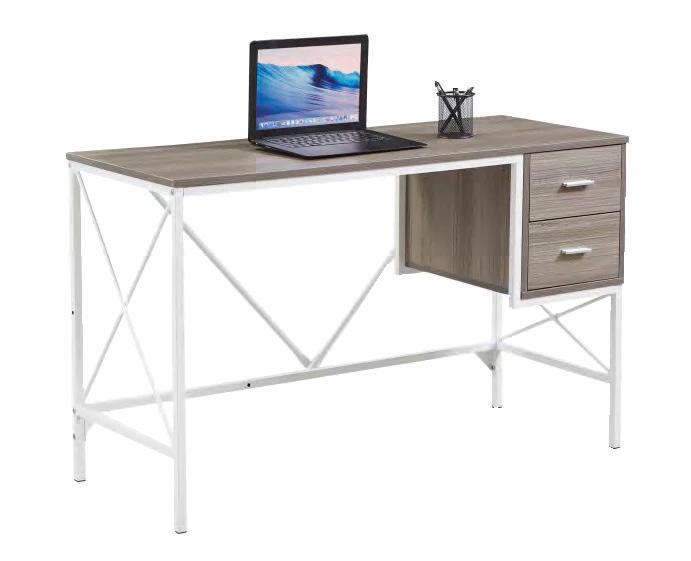




In the remote village of Okakwiyu, where the wind carries the scent of tilled earth and the calls of livestock, 31-yearold Elise Amadhila is reshaping her life one crop and one animal at a time.
At times, it has been a back-breaking effort. Located in Namibia’s Oshikoto Region, Okakwiyu is among the many northern villages affected by an El Niño-induced drought that ravaged the country over the past three years. Yet, despite the odds, Amadhila has transformed this sandscape into a flourishing, vegetable-filled paradise.
Today, she is raising livestock and, more recently, growing crops, thanks to a project supported by the United Nations World Food Programme (WFP) and the United Kingdom (UK). Launched in 2025, the project aims to improve maternal and child nutrition by giving dozens of smallholder farmers agricultural training and equipment to grow healthier, hardier food.
“I wanted to help my family by providing them with a healthier diet, like carrots to support their eyesight and cabbage to aid digestion,” Amadhila says.
Born and raised in Okakwiyu, Amadhila graduated university with a bachelor’s degree (honours) in higher primary education, specialising in natural science and mathematics. She hoped to be a teacher, but limited job opportunities pushed her in an unexpected direction: agriculture.
“Agriculture is just a fulfilling occupation,” Amadhila says, “It’s self-employment, and it doesn’t cost much. All you need is to apply your mind and work hard.”
Seeing several of her neighbours raise chickens planted the first seeds of inspiration. What started off with a few hens gradually grew into a modest animal farm, which now includes pigs and pigeons. Amadhila finds joy not only in the meat and eggs her animals provide, but also in the daily interactions with them.
Rising food prices and the burden of travelling long distances to buy ever-pricier vegetables, inspired her to start growing crops. “Sometimes, you just want to make a salad for lunch, but it’s simply too expensive,” she says.
Now Amadhila’s salads are made with her own greens. Spinach and cabbage, but also carrots and onions sprout from her fields, turning her homestead into a blossoming agricultural haven.
It was not always smooth sailing. Poor soil fertility, limited water access and early struggles with seed germination nearly pushed her to give up. The years of punishing drought made things worse.
“I was about to stop farming, but I used what I learnt from the training and tried using organic fertiliser and that’s when everything started growing,” she says of the WFP-UK project.
Through the support of WFP and the UK, Amadhila and 30 other participating farmers received vital agricultural inputs, including pesticides and seeds. They also received training on composting, soil analysis, food preservation, safe use of pesticides and how to use shade nets and irrigation equipment efficiently. These assets and skills have saved precious water, kept pests at bay, enriched soil fertility and boosted their harvests.
Amadhila’s horticultural project is not just about feeding her mother and her two nieces; it is about laying the groundwork for a bigger vision. She plans to expand her business, planting more crops and eventually selling them to local schools.
Instead of a classroom, Amadhila’s horticultural project has become her new lecture hall, a place where resilience, innovation and purpose grow side by side. In a world where many wait for opportunities to knock, she built her own path with determination, compost, care… and a whole lot of chickens!
Theodore Uukongo
Scan to read more about WFP’s work with support from the British High Commission in Namibia
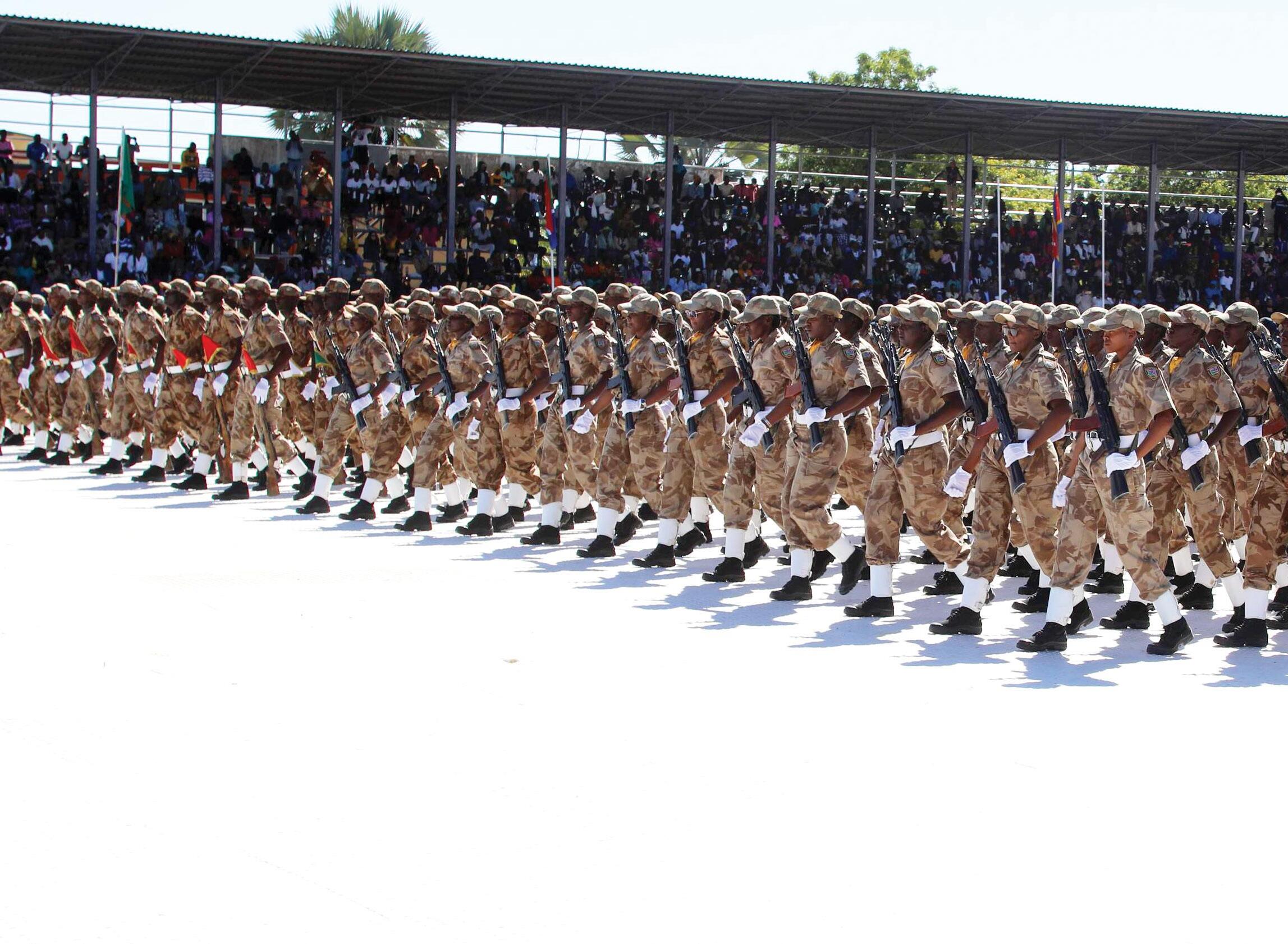


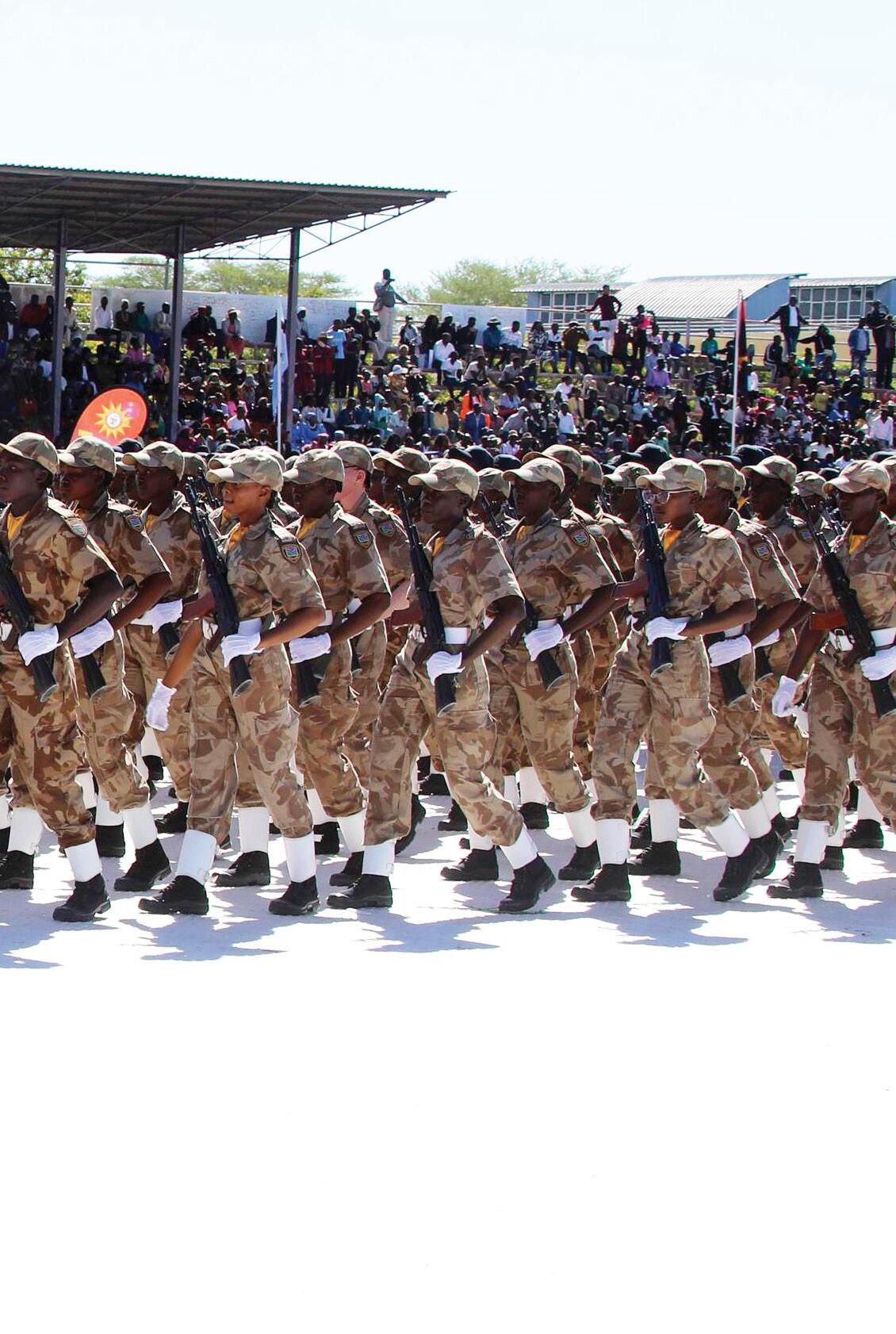
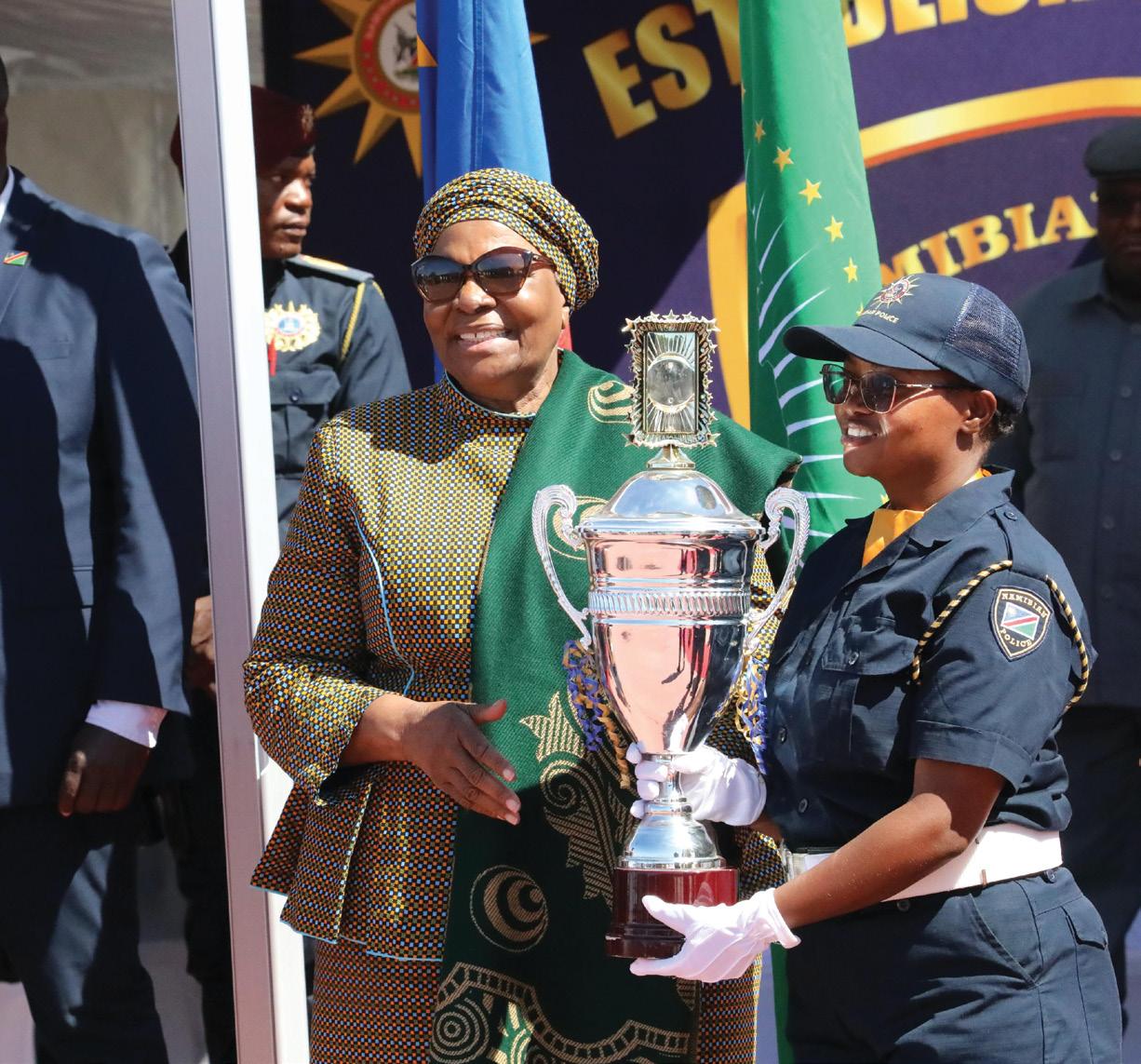
Atotal of 1,779 cadet constables have graduated after successfully completing the Police Basic Training Course 1 for the 2024/2025 financial year. The event, held at the Oshakati Independence Stadium, celebrated the new constables under the theme “Together We Stand: Empowering a Safer Namibia”.
President Dr Netumbo Nandi-Ndaitwah, who is also the commander-in-chief of the Namibian Defence Force, officiated the graduation and reminded the graduates and attendees about the vital role of law enforcement in sustaining Namibia’s peace, stability and development. She congratulated the new recruits and highlighted the importance of unity between the Namibian Police Force and communities in ensuring national safety.
The recruits underwent training at the Ruben “Danger” Ashipala, Simon Mutumba Mutumba and Pius Joseph Kaundu Police Training Centres, with 375 of the graduates having received specialised training in border and infrastructure protection, public order management and VIP protection.
The new recruits were reminded to not view their recruitment into the force as simply job creation but as a voluntary service to protect the nation, uphold the police code of conduct, maintain professionalism and continuously seek personal growth.
“I therefore urge you to take pride in your profession and uphold the reputation and principles of the Namibian Police Force as entrenched in the Namibian laws. I have no doubt that you will deliver and carry out your duties to the best of your abilities,” she added. With the rising tide of serious crimes in the country, including gender-based violence, drug abuse and murder, Nandi-Ndaitwah used the platform to denounce such acts, referencing the recent killings of Ingrid Maasdorp (5), Roswinds Fabianu (6) and Beyoncé !Kharuxas (15) in Okahandja. “I urge the Namibian Police Force, together with all stakeholders in the criminal justice system, to work tirelessly and vigorously to ensure that perpetrators are brought to justice and peace restored in our communities. The 8th Administration reaffirms its solid position of zero tolerance towards criminals and perpetrators of heinous crimes in our society,” she stated.
The president expressed her gratitude to the families of the recruits for their sacrifices, and she reaffirmed the government’s commitment to strengthening the Namibian Police Force (NAMPOL) as a pillar of peace and security.
Maggie Forcelledo
Macro Insight: Hospitality statistics
Tourist inflows are gaining momentum ahead of Namibia’s peak tourism season (May to September). In April 2025, national hospitality occupancy stood at 54.94%—slightly below 58.19% recorded in April 2024 but marginally above the pre-pandemic level of 54.73% from April 2019. This marks the highest monthly occupancy rate recorded so far in 2025.
Month-on-month, occupancy rose by 24.1% from March 2025, reflecting a strong seasonal rebound. However, the year-todate (YTD) average occupancy remains at 41.49%, still below the 2019 YTD average of 44.92%.
Our Economic Outlook for 2025 identifies tourism as a key growth driver for the remainder of the year. The sector is likely to benefit from concurrent private sector developments such as green hydrogen, oil and gas projects, salmon farming and kelp production in Lüderitz, and expanded gas pipeline and mining activity which are expected to enhance destination visibility and boost visitor numbers.
Namibia’s strategic emphasis on attracting high-net-worth tourists through premium lodges and exclusive eco-tourism experiences positions the sector to better withstand economic volatility. Luxury travel tends to be more resilient during downturns, as affluent travellers are less likely to scale back on travel. This approach not only supports revenue consistency but also ensures continued inflows of high-spending international visitors who make a meaningful contribution to the economy
Regional Performance
Regional performance in April 2025 showed varied momentum across the country. The coastal region recorded the highest occupancy rate at 60.79%, up significantly from 45.95% in March. This sharp increase was largely driven by Easter holiday travel, with many inland residents visiting the coast.
The northern region also experienced an improvement, reaching 55.50%, supported by major events such as the Newspaper Cup and Private Schools’ Weekend hosted in Outjo. In the southern region, occupancy rose modestly to 53.65% from 48.01% in the prior month, indicating a steady recovery. Conversely, the central region recorded the lowest occupancy rate at 44.41% in April, despite an improvement from 41.55% in March. While still lagging other regions, the month-on-month gain signals a gradual rebound.
Leisure travel continued to dominate, accounting for 95.16% of all room nights in April. Business travel contributed 3.92%, while conference-related stays remained limited at 0.92%, consistent with April 2024 trends.
Business travellers showed a clear preference for coastal establishments, supported by international delegations tied to Namibia’s energy sector. The coastal region’s business occupancy reached 10.98%, the highest across all regions. The reinstatement of FlyNamibia’s daily flights between Windhoek and Lüderitz further improved access and convenience for business travel.
While business and conference travel provide incremental gains, Namibia’s tourism sector remains firmly driven by leisure travel a trend that is likely to persist over the near term
As in previous months, the majority of international visitors to Namibia in April 2025 came from Germany, Austria, and Switzerland, collectively accounting for 40.29% of total arrivals. This was followed by domestic travellers, who represented 19.30% of occupancy—though notably down from 26.52% in March.
French visitors contributed 6.90%, while travellers from the Benelux region (Netherlands, Belgium, Luxembourg) increased their share from 4.43% in March to 5.31% in April. The uptick from both the DACH and Benelux markets can largely be attributed to improved connectivity, particularly through direct flights from Frankfurt and the recently launched Munich–Windhoek route operated by Discover Airlines.
Domestic tourism saw a notable decline, likely due to the end of the Easter holiday period. Meanwhile, South African tourist presence saw a modest increase, with their share rising from 7.13% in March to 7.23% in April.
The Namibian government launched a targeted tourism marketing campaign aimed at expanding the country's visitor base beyond its traditional European markets. The campaign will focus on three key regions: Asia, the United Arab Emirates (UAE), and North America. Spearheaded by the Namibia Tourism Board (NTB), this initiative forms part of the Ministry of Environment, Forestry and Tourism’s Programme: Tourism Growth and Development and Gaming Regulation, which has been allocated N$51.3 million for implementation.
The strategic pivot comes at a time when Namibia’s tourism sector is recovering strongly post-COVID-19, with tourist arrivals rising from 169,565 during the pandemic to 863,872 in 2023. By engaging emerging high-potential markets, the Ministry aims to reduce reliance on European tourist inflows primarily from Germany, the UK, the Netherlands, France, and Belgium and mitigate exposure to regional economic shocks or travel disruptions.
The initiative also aligns with broader sector reforms, including the development of a National Spatial Tourism Development Master Plan, a review of the National Tourism Policy, and the drafting of a new Tourism Act. These efforts are expected to enhance the investment climate, support infrastructure development, and improve tourism governance.
We believe the implications for Namibia’s Tourism Sector will be:
• Market Diversification: Targeting Asia, the UAE, and North America introduces new revenue streams and cushions the sector against downturns in traditional markets.
• Foreign Earnings and Job Creation: Increased tourist inflows are likely to boost foreign currency receipts, support job creation, and stimulate investment in hospitality and logistics.
• Air Connectivity and Infrastructure: Expanding air routes and tourism-related infrastructure will be essential to attract long-haul travellers from these distant regions.
• Cultural Diplomacy and Visibility: The campaign promotes Namibia’s heritage, landscapes, and culture to a broader global audience, fostering international awareness and engagement.
Our Take Namibia’s tourism sector continued to show positive momentum in April 2025, setting a solid foundation ahead of the peak travel season. Nationwide hospitality occupancy rose to 54.94%, slightly above pre-pandemic levels (April 2019: 54.73%) and marking the highest monthly rate recorded this year. This represents a 24.1% month-on-month increase, with the yearto-date average now at 41.49%, though still below the 2019 benchmark of 44.92%.
Our 2025 tourism forecast projects a sectoral growth rate of 5.5%, underpinned by an anticipated 7.3% rise in visitor numbers and projected tourism revenue of N$4.6 billion. This growth is largely supported by enhanced international connectivity, targeted marketing campaigns in Europe and Asia, and growing interest in eco-tourism and cultural experiences.
Namibia’s strategic shift toward attracting high-net-worth travellers through the development of premium lodges and exclusive eco-tourism offerings is expected to provide resilience against global economic uncertainties. Luxury tourism segments typically remain stable even during periods of financial strain, ensuring a more consistent revenue stream and long-term sector sustainability.
In parallel, ongoing promotional efforts that position Namibia as a year-round destination are helping reduce seasonality and drive more consistent demand across regions. Efforts to align tourism development with the National Tourism Policy, the upcoming Tourism Act, and the Spatial Tourism Development Master Plan remain vital to securing investor confidence and sectoral growth.
Policy and Investment Priorities
To maintain competitiveness and support sustainable expansion, key focus areas include:
• Streamlining visa procedures to facilitate travel from core and emerging markets.
• Accelerating public and private investment in tourism infrastructure, especially in high-demand regions.
• Enhancing air access and route development, including links to underserved markets.
• Promoting sustainable tourism standards and responsible travel experiences to meet global eco-tourism expectations.
Namibia’s tourism sector is well-positioned for recovery and expansion in 2025. With the right policy support, strategic marketing, and infrastructure investments, the industry can continue to play a pivotal role in economic diversification, job creation, and foreign exchange earnings solidifying Namibia’s standing as a top-tier destination for sustainable travel in Africa.

Monthly national number of rooms sold, beds sold (Thousands) - April 2016 - April 2025
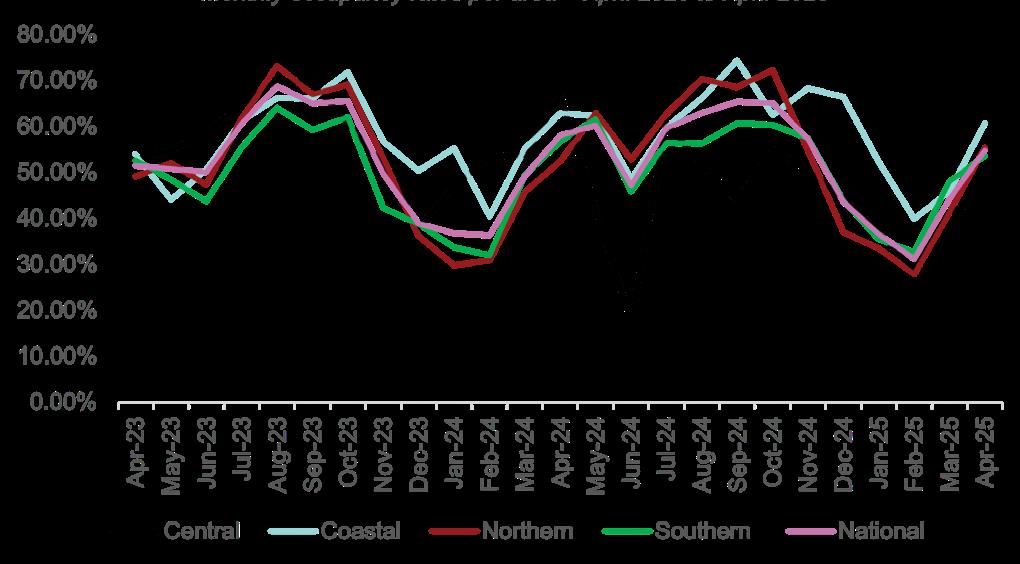
Monthly occupancy rates per area - April 2023 - April 2025
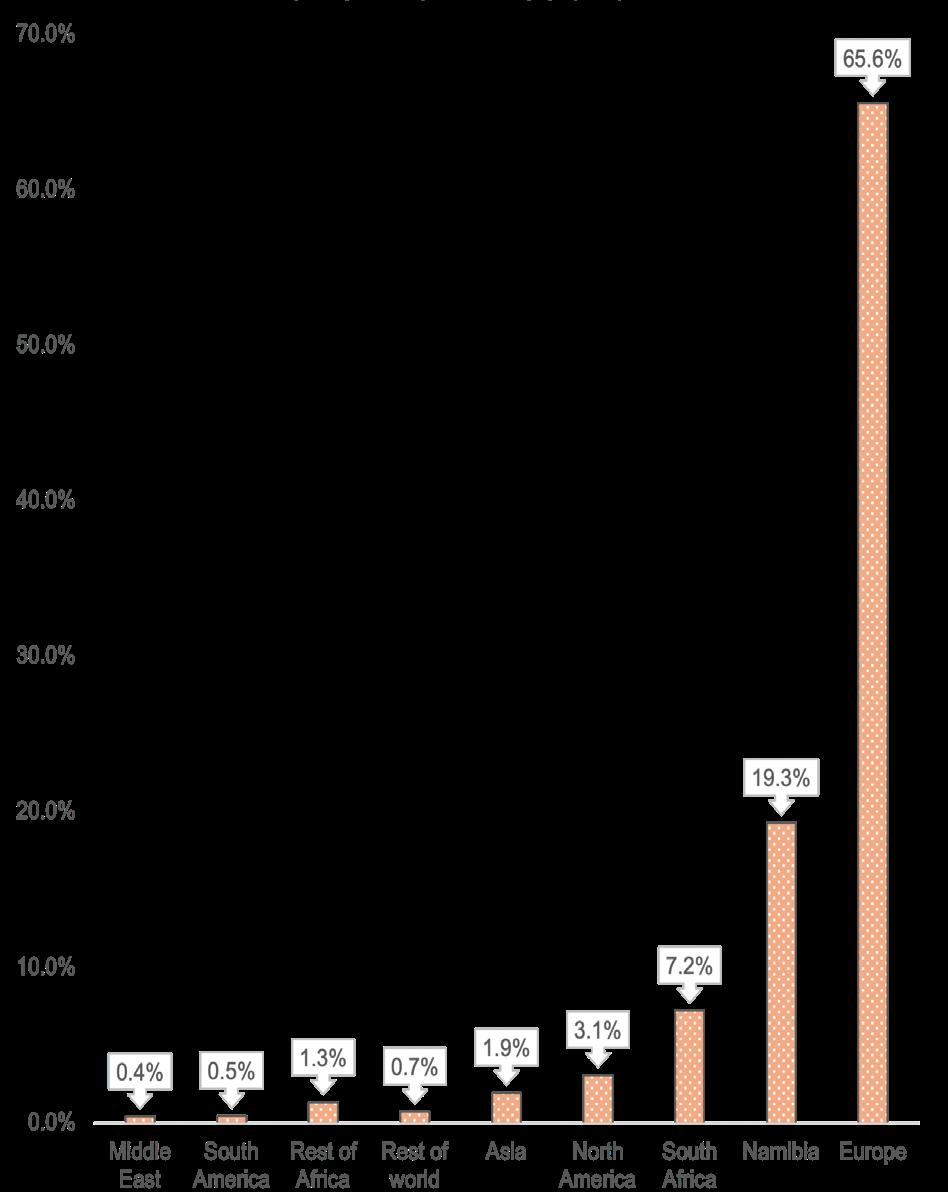
Occupancy rates per country (%) - April 2025
Simonis Storm is known for financial products and services that match individual client needs with specific financial goals. For more information, visit: www.sss.com.na NETWORK


ElevateyourjourneywiththeunrivaledcomfortandperformanceofourKingAiraircraft. Whetheryou’retravelingforbusinessorleisure,theKingAircombinesluxury,efficiency,and safety,deliveringaseamlessflyingexperiencetailoredtoyourneeds.

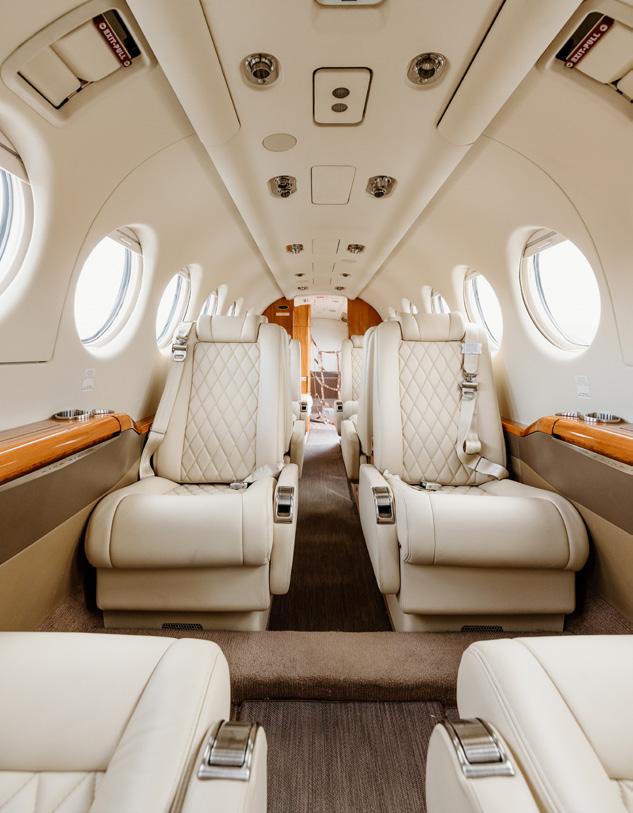
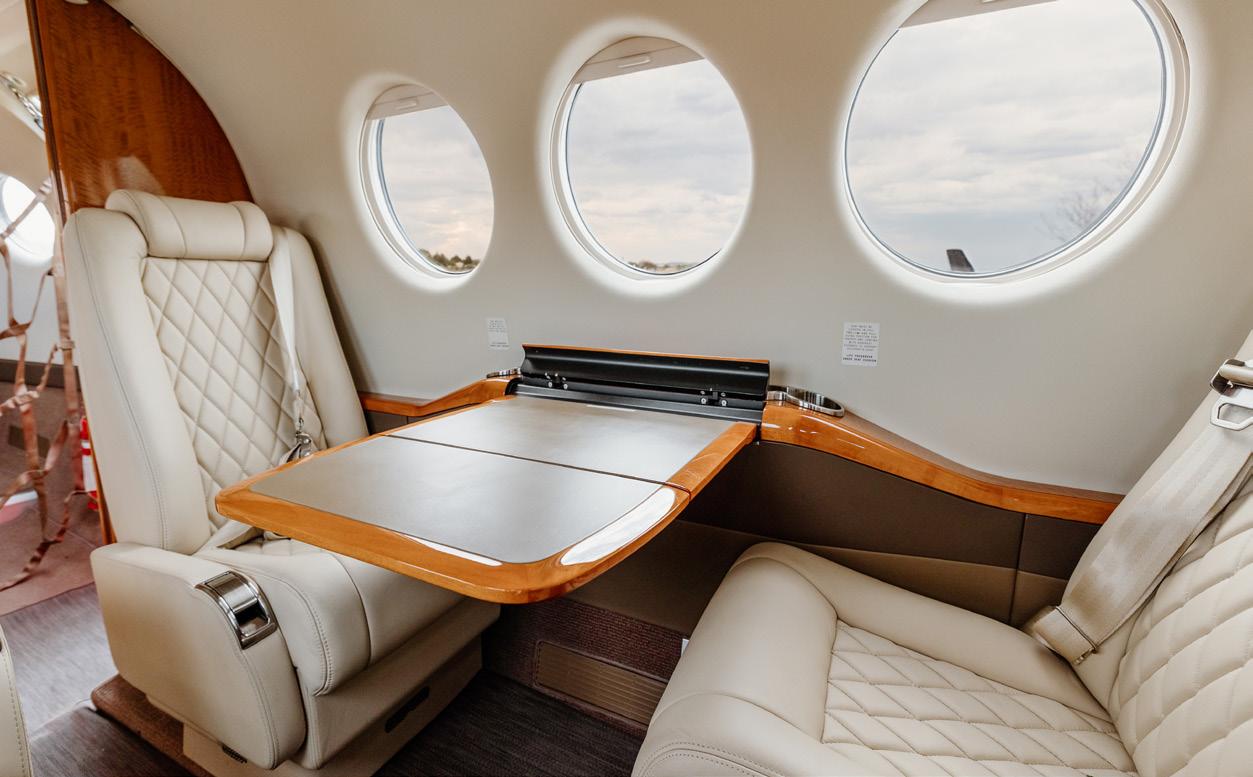



Namibia stands as a beacon of hope and success in a world facing a biodiversity crisis. Namibia’s Wildlife Economy, a powerful new documentary series directed by Andy Botelle of MaMoKoBo Video & Research, offers an in-depth look at how this southern African nation has achieved one of the world’s most compelling conservation success stories.
In 1990, upon gaining independence, Namibians made a pivotal decision: to reclaim the right to manage and benefit from their natural resources. As Chief Joseph Mayuni of the Mafwe of Mashi Traditional Authority recalls, “Our own government wanted to follow the laws of the former government, South Africa… But since we complained… they listened to us and gave us back the power to decide how we manage our own wildlife.”
This bold move laid the foundation for a rights-based conservation approach that has enabled wildlife to thrive both inside and outside of protected areas. Namibia now boasts the world’s largest free-roaming populations of black rhino and cohosts the largest population of savannah elephants.
provides critical funding for both community development and species protection.
While Namibia’s wildlife economy is widely applauded, it remains misunderstood in many parts of the world. International policies — especially those targeting trophy hunting in countries like the UK — risk undermining the very conservation efforts they seek to support.

Through engaging interviews with conservation scientists, policymakers, traditional leaders, and landowners, the documentary explores how Namibia’s philosophy of sustainable use has enabled both wildlife and people to flourish. As Dr Chris Brown, CEO of the Namibian Chamber of Environment, puts it, “It’s very clear that what comes first is devolving rights over wildlife to communities and farmers, and developing a vibrant wildlife economy for the benefit of the people.”
Bennett Kahuure, Director of Parks and Wildlife at the Ministry of Environment, Forestry and Tourism, echoes this success: “We are talking about the largest free-roaming population of rhinos... as a country, we really have done tremendously well with our conservation policies.”
The production, which includes a 36-minute full-length documentary, a 7-minute mini-documentary, and eleven indepth interviews (ranging from 15 to 63 minutes), provides a holistic view of Namibia’s wildlife economy. The series tackles head-on the controversial topic of trophy hunting, explaining how it fits into Namibia’s conservation model and
“Our wish,” says Dr Brown, “is that this film series reaches a diverse audience on all continents and gets people thinking about the real conservation and socioeconomic outcomes that we all want — healthy, expanding and connected wildlife populations and indigenous biodiversity, sustainably managed across large open landscapes.”
Namibia’s Wildlife Economy is more than just a documentary — it’s an urgent appeal for international understanding and cooperation. The story it tells is one of empowerment, vision, and the extraordinary results that arise when people are given the rights and incentives to protect their natural heritage.
Let’s help Namibia’s conservation model inspire action around the world.
• 45% of communal conservancy revenue comes from hunting.
• 1995 - 7,000 elephants, today more than 24,000 elephants.
• Trophy hunting accounts for 3% of tourists but 20% of tourism revenue.
Scan to stream or download documentaries


“Protecting Namibia’s critically endangered rhinos and supporting those who safeguard our wildlife isn’t just a noble cause; it’s a responsibility.”— Jason Shikalepo, Head of Investment, RMB Namibia
Each year, the dry winds of Damaraland carry more than dust – they carry the stories, struggles and hopes of a nation deeply connected to its wilderness. In this vast landscape, a group of cyclists set off not merely to conquer terrain but to champion a cause that has come to define conservation in Namibia. What began in 2015 as the Ride for Rhinos has now evolved into something even more urgent and inclusive: the RMB & Wilderness Ride for Rangers.
This shift is more than symbolic. It reflects a maturing understanding of what meaningful conservation truly requires, from the ground up and across sectors.
FROM RHINOS TO RANGERS: AN EVOLVING MISSION
Namibia has long been celebrated for its innovative, community-based conservation efforts. But as the ride enters its second decade, attention is turning not only to the iconic wildlife but also to the unsung heroes who protect them: the rangers, trackers, game guards and communities who risk their lives to preserve biodiversity in some of the world’s harshest terrains.
“These are not just protectors of biodiversity; they are the guardians of Namibia’s future,” notes RMB Namibia’s head of investments, Jason Shikalepo. “Their work sustains ecosystems that fuel tourism, uphold ecological balance and preserve the cultural identity of our landscapes.”
that considers the social and environmental dimensions of prosperity. Conservation isn’t charity; it’s strategic foresight.”
The 2025 RMB & Wilderness Ride for Rangers, stretching from the Hoanib River to Wilderness Desert Rhino Camp in the Palmwag Concession, does more than test endurance. It tells a story of unity, shared purpose and a common future.
Funds raised through the tour directly support frontline organisations such as Save the Rhino Trust Namibia and Children in the Wilderness – programmes that not only protect wildlife but nurture the next generation of environmental stewards.
“The ride is a metaphor for what’s possible when partnerships are rooted in purpose,” adds Shikalepo. “When businesses align their capital with causes that matter, something transformative happens, not just for wildlife but for national identity and intergenerational equity.”
The Ride for Rangers calls for a broader definition of value – one that includes ecological health, social resilience and the protection of what makes Namibia unique.
Their contribution is vital, yet too often underfunded, undervalued and unseen. That is why the newly named Ride for Rangers refocuses the spotlight, placing the human element of conservation at the heart of the mission.
FORWARD-THINKING ORGANISATIONS AS ENVIRONMENTAL STEWARDS
At a time when climate risks, resource scarcity and biodiversity loss dominate global headlines, forward-thinking organisations have a unique opportunity – and responsibility – to act as environmental stewards. These are the businesses that understand that profit and purpose are not in conflict but intertwined.
Their leadership goes beyond traditional CSR models. It is embedded in strategy, driven by values and expressed through action. Whether it is reducing carbon footprints, supporting frontline conservation or investing in sustainable development, these organisations are helping to future-proof not only ecosystems but economies.
“At RMB Namibia, our commitment goes far beyond finance,” says Shikalepo. “We believe in sustainable growth: growth
In an era of increasing complexity, leadership cannot be measured solely by financial returns. The Ride for Rangers calls for a broader definition of value – one that includes ecological health, social resilience and the protection of what makes Namibia unique.
“To those who ride, fund, plan and support this effort: thank you,” says Shikalepo. “Your involvement is more than participation; it is leadership.”
As another year of the epic Ride for Rangers concluded, RMB Namibia reaffirmed a simple but powerful truth: authentic leadership extends beyond financial performance; it encompasses a profound, enduring commitment to the wellbeing of our environment and the resilience of our communities.
By supporting initiatives that empower local communities and safeguard our natural heritage, we are not only protecting what makes Namibia extraordinary. We are investing in a future that is truly sustainable, inclusive and resilient.

Jason Shikalepo, Head of Investment, RMB Namibia
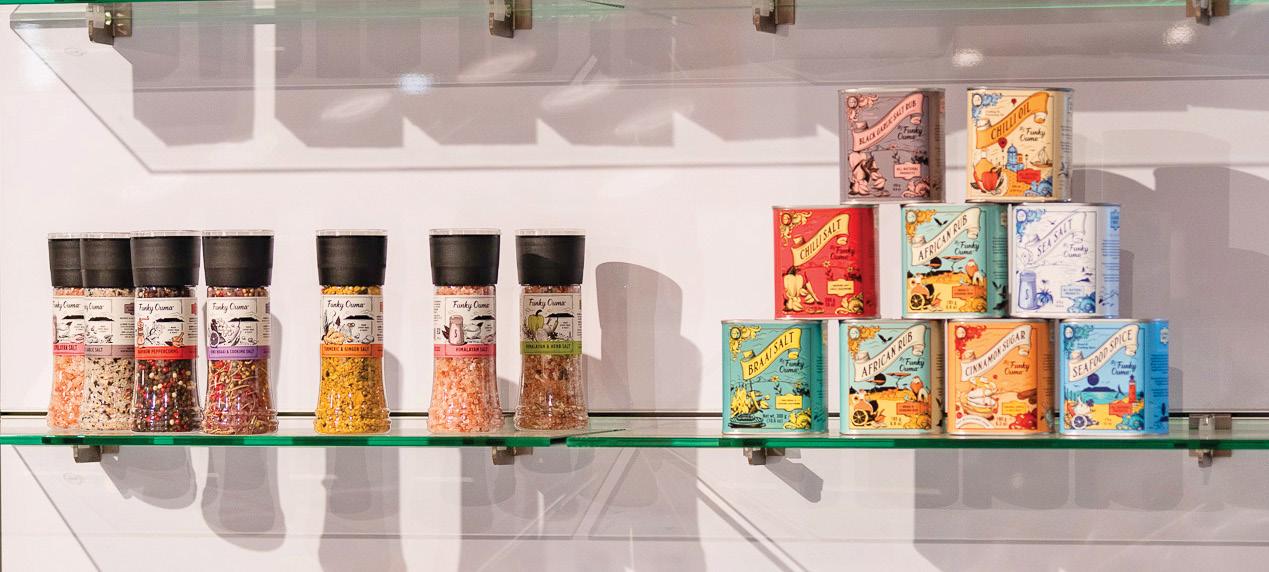
In the middle of a busy week, cooking can feel like another thing to get through. But what if it could be simpler, soulful and joyful?
Enter Funky Ouma, the South African brand transforming everyday meals with a bold lineup of flavour-packed essentials. From herb-infused salts and aromatic coffee to extra virgin olive oil and turmeric and ginger boosters, Funky Ouma brings charm and wellness to your kitchen.
Simple ingredients, big impact
Funky Ouma is all about honest, straightforward flavour. Their range uses natural, high-quality ingredients: rosemary and garlic salts from the garden, robust coffee that wakes you up, and golden turmeric known for its benefits. Whether roasting veggies, dressing a salad, marinating meat, or brewing your first cup, these essentials elevate the ordinary into something memorable.
Made for everyday cooking
You don’t need to be a chef to cook well, just the right tools. Funky Ouma’s range complements real-life kitchens, whether you are grilling meat at a weekend braai, tossing a quick dinner, or enjoying a slow Sunday breakfast. A sprinkling of herb salt, a hint of olive oil, or a spoonful of turmeric and ginger booster can turn any dish into a feel-good favourite.
And for the morning? Their freshly ground coffee is smooth, satisfying and bold – your go-to for that first quiet moment.
Wellness meets flavour
Funky Ouma believes good food should nourish more than your taste buds. Their blends are filled with herbs and spices that support vitality, digestion and wellbeing. With ingredients chosen for freshness and function, the flavours will make you feel good inside and out.
Honest. Natural. Full of flavour.
Funky Ouma makes it easy to cook simply, live well and eat joyfully. If your kitchen needs inspiration, it might be time to open the pantry and let the flavour in.


Namibia stands at a tantalising crossroads. It’s a rare moment, not shared by many countries.
Offshore oil discoveries, a visionary greenhydrogen roadmap, and a post-pandemic tourism rebound have catapulted the country onto the global stage like never before. The question, however, echoing through boardrooms from Windhoek to London to New York is a simple yet powerful one: is this a passing flash of momentum or the dawn of something seismic?
Challenger thinking
Conventional wisdom might suggest this is a false dawn. Challenger-led thinkers, however, lean in, arguing that a path to growth doesn’t rely exclusively on following incumbent thinking. To the challenger-minded, every signal says Namibia is at a meaningful inflection point.
Geopolitically, Namibia is gaining relevance. Regionally, it is emerging as a climate-forward alternative to many of its resources-heavy peers. Commercially, the building blocks are in place for a diversified growth model powered by energy, ecotourism, and regional logistics.
But this window of opportunity will not remain open indefinitely. In order for favourable momentum to convert promise into reality three key elements are required:
• Foresight - the ability to read global currents and position ahead of them.
• Integrity - governance that makes corruption the exception, not the cost of entry.
• Execution - co-ordination between government, private sector, and civil society that moves projects from press release to project finance at speed.
Navigating this complexity takes a strong stomach. Challengerled advisers thrive in this environment, untangling complexity, injecting consequential insight, and guiding capital to move first – since first movers set the rules.
Whether the country fully embraces this opportunity, and crosses the threshold, depends on multiple critical conversations. Decisions made by policy-makers shaping fiscal terms, considerations made by investors weighing up frontier risk, and choices made by citizens insisting that growth be broad-based and fair will all contribute to the durability of the inflection point.
These and many similar conversation will be held on 23 July in Windhoek ICC at a one-day conference hosted by Moore Infinity - the Namibia affiliate of the global Moore network. The forum entitled “Taking Stock: What every business owner needs to know about Namibia” will convene companies setting up or scaling up operations in Namibia and will drill into the practical issues that can make or break an investment in the country.
A blank canvas
Namibia offers a clean canvas and outsized upside for organisations willing to partner with challenger-led advisers who match their appetite for speed, creativity, and accountability.
The offshore oil discoveries, the hydrogen roadmap, and the tourism rebound are not the story. They are chapters in a larger narrative yet to be written. It’s the bold set the pace and write the next chapter – not those waiting for consensus. And, indeed, if the bold supporters of the Namibia narrative write the story with energy, conviction and bravery then this could be the moment that changes everything.
Namibia is ready. Are you?






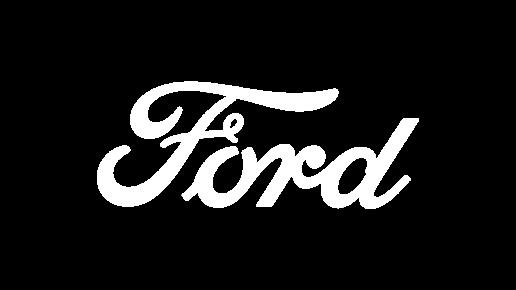


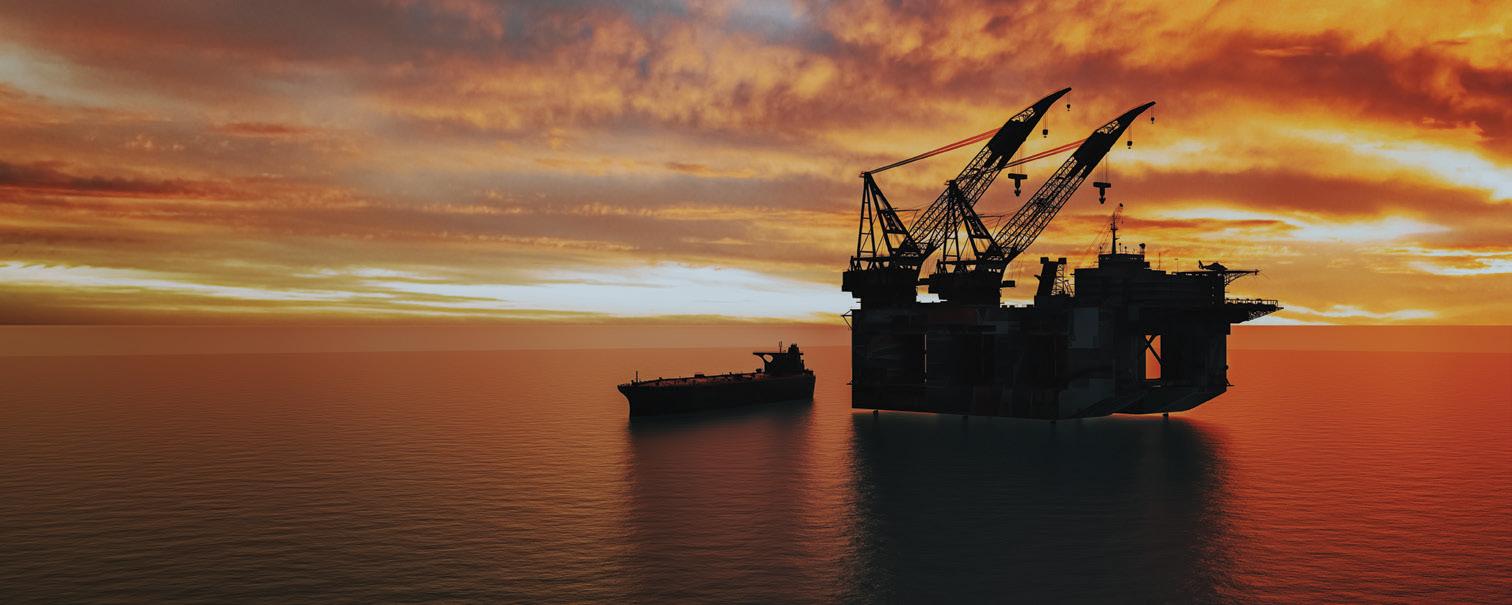



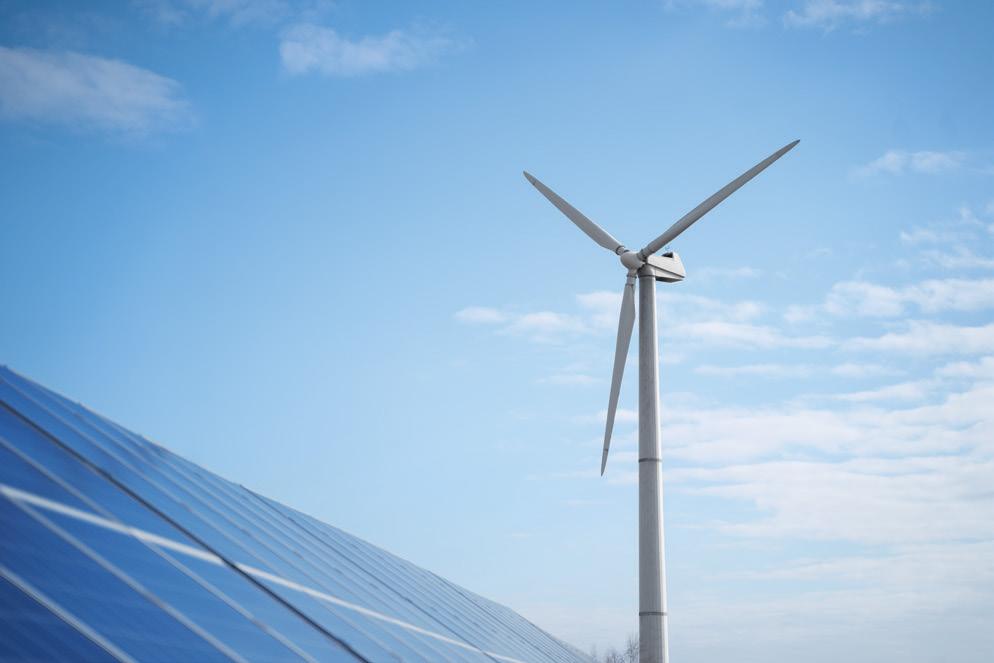


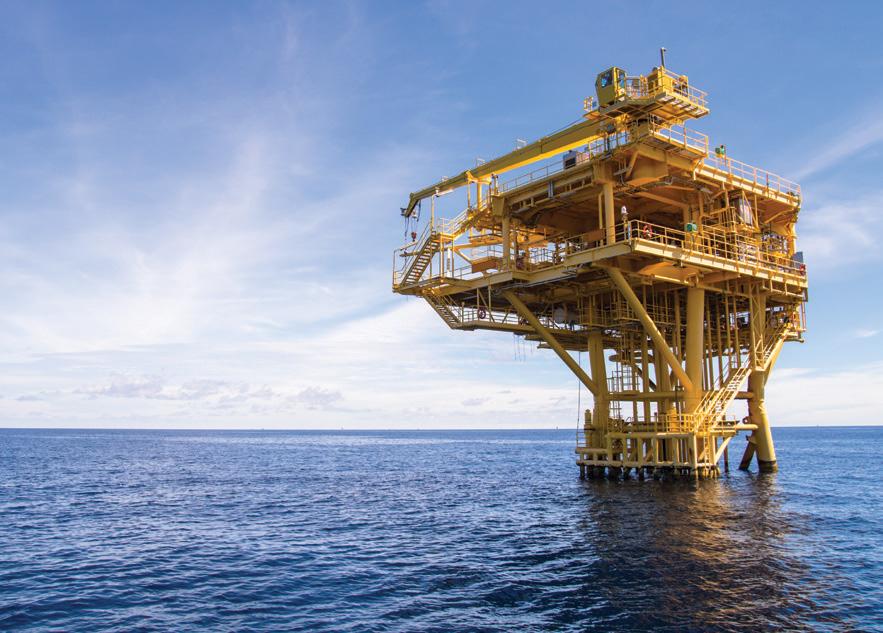








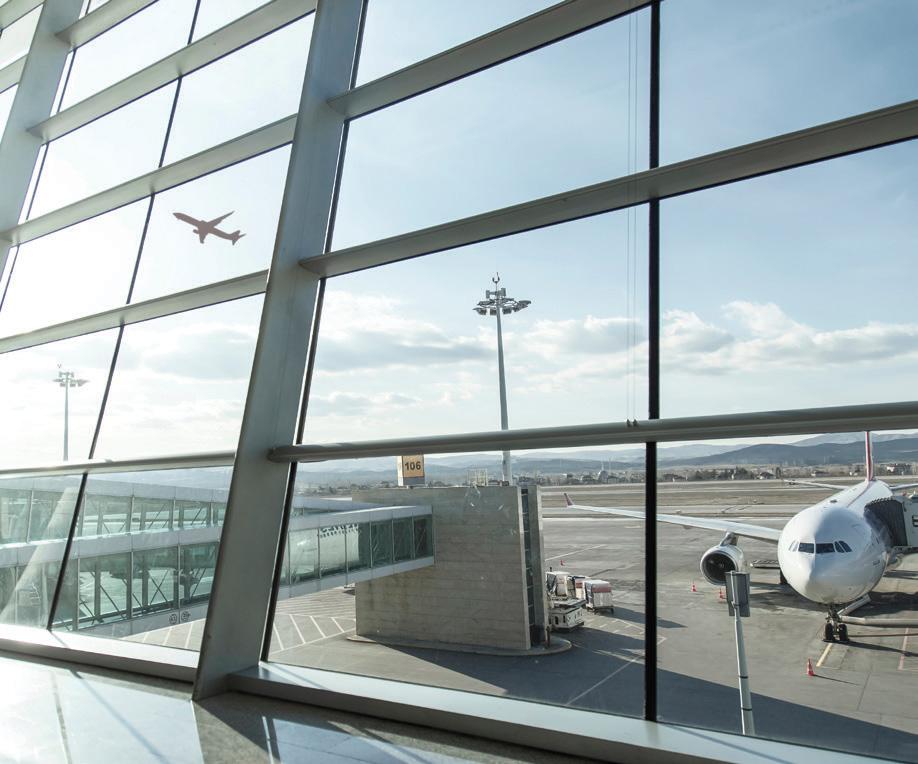


The recent N$250 million expansion of Hosea Kutako International Airport (HKIA) has significantly enhanced the airport’s capacity and efficiency, positioning it to accommodate increased passenger volumes through 2030.
Terminal Expansion: The departure hall has been enlarged to accommodate increased passenger movement, and a new arrivals hall has been constructed, enhancing overall passenger flow.
Compliance and Safety: The upgrades ensure full compliance with International Civil Aviation Organization (ICAO) standards, improving safety and operational efficiency.


Miss Namibia has always been a beacon of elegance and grace, but in recent years, the crown has evolved into a powerful symbol of opportunity, empowerment, and economic vitality, thanks in no small part to strategic sponsorships and national support. Since 2023, Debmarine Namibia has proudly sponsored the pageant through Namibia Broadcasting Corporation (NBC), helping it flourish into a platform that celebrates talent and transforms lives.
With this three-year commitment, Debmarine Namibia has not only elevated the prestige of the event but also broadened its social impact. The pageant now serves as a launchpad for young women to access life-changing tools, industry connections, and national recognition that can shape their futures and amplify their voices.
Opportunities beyond the tiara
The winner of Miss Namibia receives a reward package valued at over N$500,000 including a new vehicle, cash prizes, and services in wellness, fashion, beauty, and lifestyle. Yet, the true value lies in the doors that open long after the crown is placed. From national tours to ambassadorial appearances, the reigning Miss Namibia becomes a visible force of influence. The King of Ondonga, Fillemon Shuumbwa Nangolo, recently added a cultural flourish to the role, pledging a heifer and N$30,000 to the winner. His call for business support further reinforced the growing significance of the pageant in the national psyche.
According to NBC spokesperson Beulah Boois-Beukes, each of the ten finalists benefit from a fully sponsored nationwide journey, visiting communities, learning through public speaking and media training, and building networks. “These young women gain more than titles; they walk away with tools that can shape their futures,” she noted.
Empowering through purpose
Every contestant enters with a personal advocacy project, which they cultivate with guidance from mentors, sponsors, and media professionals. These causes often rooted in education, gender equality, or community upliftment gain traction through NBC’s broad media (television, radio and online) reach and Debmarine Namibia’s social responsibility vision.
The pageant has become a catalyst for advocacy, giving all the competing young women the visibility and credibility they need to become changemakers in their communities, with a ripple effect of opportunities that extends well beyond just the winner.
Fuelling Namibia’s creative economy
One of the more profound effects of the pageant’s transformation lies in its economic footprint. With growing production demands and an expanding national footprint, Miss Namibia is now a seasonal employer of note providing opportunities for choreographers, stylists, makeup artists, designers, sound technicians, and more.
For designer Aina Shigwedha, creating garments for Miss Namibia has brought heightened exposure and professional



growth. “It’s one of the few platforms in Namibia that consistently celebrates local fashion. It gives young designers like me a real chance to get noticed,” she said.
Choreographer Stanley Mareka shared a similar sentiment. “Miss Namibia opened doors for me into sectors I never thought I would reach. It transformed not just my skills, but also how I approach my work, my leadership, and my mission.”
The pageant's Chief Executive Officer, Umbi Karuaihe-Upi, highlighted how the growing production scale has created seasonal job opportunities behind the scenes. From auditions to grand finale preparations, a wide pool of professionals benefit directly, especially those in the creative and service industries.
Each year, the national costume designed for Miss Namibia’s international appearance becomes a cultural statement. “It’s a chance to show the world what Namibian design is capable of,” said Karuaihe-Upi.
Regional reach, national pride
Since 2023, the Miss Namibia Organisation has pursued a strategy of regional inclusion by hosting the event in areas areas such as Swakopmund (Erongo Region), Lüderitz (||Kharas Region) and soon Ongwediva. This approach not only decentralises the spotlight but also enables local businesses, especially youth-led ones, from caterers to tailors ,to reap the benefits of increased footfall and media exposure.
“The pageant creates a valuable platform that propels contestants onto international stages, supported by strong local followings. This exposure positions Namibia’s creative industry as a credible source of talent for global scouting. Importantly, the industry—largely driven by youth—generates seasonal employment that extends far beyond the 20 semifinalists, 10 finalists, and top 3 titleholders. On average, the pageant season spans 10 months, serving as an employment vehicle that stimulates economic activity. Its impact reaches beyond the contestants, positively influencing the livelihoods
of their families, hosting communities, and a wide range of local businesses.”
NBC’s Chief Commercial Officer, Nico Mwiya, sees this broader reach as part of a larger national mission. “Since taking full ownership, our goal has been to ensure Miss Namibia is a platform for pride, representation, and social movement. It’s about more than beauty, it’s about building a nation.”
A platform for the future
Structured training in leadership, media relations, and advocacy turns contestants into national ambassadors. NBC and the Miss Namibia Organisation are committed to building the brand into a leading African pageant known for empowerment and excellence.
Looking ahead, Mwiya sees even greater promise. “With growing visibility, improved production value, and unwavering support, we’re nurturing a pageant that could rival the best on the continent.”
What began as a beauty contest has now become an ecosystem, one that fosters personal growth, promotes local enterprise, and empowers women to dream boldly and lead with purpose. With the 2025 crowning set for Saturday, 19 July, at the Ongwediva Trade Fair Centre, the Miss Namibia organization is ready to once again showcase the best of Namibia’s talent, culture, and vision for the future.
Mwiya applauded Debmarine Namibia’s enduring support and NBC’s visionary stewardship; "Miss Namibia is no longer just a stage, it’s a springboard into possibility."



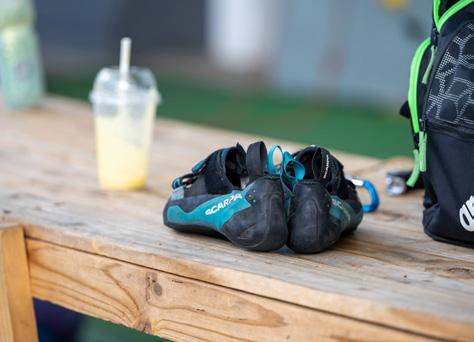









Join our growing climbing community or just pop past for a climb while you’re in town - we welcome climbers of all ages and skill levels. Find us on level 1 of the Checkers parking area at Maerua Mall underneath Virgin Active, 7 days a week. For
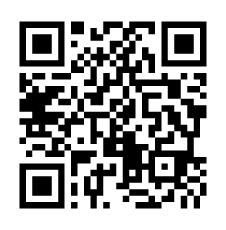
Westair Logistics simplifies your global operations with comprehensive end-to-end logistics solutions tailored for individuals, commercial enterprises, and the Oil & Gas industry. Our services include airport and town transfers, cargo handling, accommodation, excursions, and operations coordination. We ensure seamless execution, cost efficiency, and peace of mind through our expert team, delivering reliable and specialized logistics solutions for any need.




When Elisa Kandume moved from the coastal town of Walvis Bay and found himself without any form of employment in Ondangwa, an idea was birthed: starting a wood and carpentry workshop in the area.
Kandume had moved to Ondangwa in 2020 from Walvis Bay after the Erongo Region was locked down from the rest of the country due to the Covid-19 pandemic which ravaged the country. “During lockdown, life was hard and we had no business. Shortly after restrictions were lifted, I decided to relocate to the north of the country and see which opportunities I might have to pursue again,” he recalls.
Within two months of living in Ondangwa, Kandume realised that there was no place in the vicinity producing wood products for the locals at affordable prices. “When I was in Walvis Bay, we had a backyard workshop where a few friends and I were involved in the manufacturing of wood items such as tables, beds, chairs and shelves for the locals. We used to manufacture these items from pallets. We also used to fix electrical appliances such as hot plates and irons before the Covid-19 pandemic turned everything upside down and I was forced to relocate to the north of the country due to slow business and tough living standards,” Kandume says.
Using his little savings, he set up a workshop on his older brother’s plot in the Okangwena location of Ondangwa. He was also able to convince his friends and former colleagues from Walvis Bay to join him. Owing to the high cost of living in Walvis Bay, coupled with the fact that they were unemployed and had no income, Franklin van Wyk and John Simasiku had no hesitation in deciding to join Kandume up north. “These are the guys I had worked with for many years in Walvis Bay. We were like family, and when I left I had already decided that, should I happen to find a way of surviving, I would invite them over,” Kandume adds.
Today, the trio manufacture wooden beds, tables, chairs, shelves and many other items produced from pallets which they source from retailers and building and construction material suppliers in Ondangwa. They also fix electrical appliances for locals under the expertise of Simasiku, who claims to be an “electronics guru”.
“We have been operating for five years now, and while we cannot say business is good or bad, it is better. Operating
Three long-time friends from the coastal town of Walvis Bay decided to head up north due to hardship. Today, they run a successful backyard carpentry workshop.
in an informal sector comes with its own challenges, but we can say that we are able to put bread on the table,” Van Wyk says whilst busy working on a wooden bed to be delivered to a customer the same day.
For extra income, the trio also have a tuck shop on the premises of their workshop. “Sometimes customers want their item finished while they are waiting. So, they can always get something from the tuck shop to eat or drink while they are waiting,” Kandume explains. His nephew runs the tuck shop business for them.
Kandume mentions that they have a financial structure in place which ensures that each member is compensated fairly from the monthly proceeds. “We are fortunate that we don’t pay rent for accommodation or work. We all sleep here and share everything, including meals. My brother told me we do not have to pay rent, so we only pay for the electricity and water. Our revenue from the sales or repair services is properly recorded, and every month end we deduct the water and electricity contribution, as well as the money for food. The remaining money is shared equally between us,” he explains. Their income, albeit not massive, allows them to support their families back home in Walvis Bay, and keeps body and soul together. “Better a sparrow in hand than a dove on the roof,” Simasiku remarks.
Kandume notes that individual members of the group are allowed to do private work outside working hours for their own benefit. He also encourages talented members of the public to take initiative and start their own projects instead of waiting for the government or private sector to provide them with jobs. “If you believe you can do something, don’t wait until it’s late. Make hay while the sun is still shining. Start right away. Learn a skill, practise it and do something for yourself,” he advises.
With overall unemployment statistics at 36.9% and youth unemployment at a staggering 44.4% according to the latest statistics released in January 2025 by the Namibia Statistics Agency (NSA), his words are a calabash of wisdom to sip from, especially for the high number of unemployed Namibian youth.
Marx Itamalo





The Namibian Association of Differently Abled Women (NADAWO), with support from the European Union (EU), the Ministry of Gender Equality, Poverty Eradication and Social Welfare (MGEPESW) and the United Nations Population Fund (UNFPA), officially launched its new brand identity alongside the official opening of its Peer Support Office facility at the Disability Resource Centre in the heart of Okuryangava, Katutura.
Making its presence known in the national conversation around gender and disability rights, NADAWO’s goal is to provide a safe, understanding environment where women and girls can begin their journeys of recovery and reclaim their dignity in the face of domestic violence, discrimination and emotional hardship. With few safe places to turn to, this facility will serve as a place where healing begins and where power quietly builds, as sometimes the strongest warriors rise not in sirens or spotlights but in whispered stories, shared strength and open doors.
Manombe-Ncube, will offer trauma-informed counselling and support services, focusing on healing, empowerment and inclusion. It comes at a time when GBV remains a critical issue in the country, particularly for women and girls living with disabilities, who often face compounded layers of marginalisation and vulnerability.
We want to have volunteers that are GBV survivors who can become role models to others
Survivors will have a chance to speak up, be heard and begin the difficult but necessary process of recovery in a safe space. From emotional support to guidance through the legal and social systems, the centre offers more than just care – it offers solidarity.
This milestone marks a significant step in advancing the rights and wellbeing of women with disabilities, particularly survivors of gender-based violence (GBV). The newly opened facility, officiated by NADAWO’s patron, Honourable Alexia
“We want to have volunteers that are GBV survivors who can become role models to others,” said NADAWO’s national coordinator, Meriam Sam. “Such a person will be able to share what they went through and how they overcame it. They can carry out talks and community discussions, as well as educate others by sharing their own journeys. People with disabilities tend to accept and connect more deeply when they hear a message from someone who has walked a similar path,” she added.
This new facility goes beyond offering emotional support. As part of NADAWO’s broader empowerment programme, the organisation also offers skills development opportunities, including sewing classes, aimed at helping women and girls with disabilities to become independent and self-sustainable.
As part of the launch, certificates were handed out to participants of the sewing project, recognising their dedication and progress. Long-serving NADAWO members were also honoured for their enduring commitment to the cause of disability rights and women’s empowerment.
Maggie Forcelledo Paz
Quick-fire moments of Namibia and the world’s cool, clear, and captivating moments this July.
years old - that is the age of Lüderitz German style architecture, set against the Atlantic backdrop, this building truly makes a photographer's dream, especially in July when the air is cool and warm, the skies are clear, and the soft light paints every corner in magic.


8-10
2,573
square metres - The height of Namibia’s tallest mountain - Brandberg Mountain, which comes alive in July as hiking season hits its peak. With cooler temperatures and clear skies, it’s the perfect time to tackle the Burning Mountain’s summit, discover ancient rock art, and soak in panoramic views over the Namib Desert.
hours - The average amount of sunlight Windhoek basks in during July. It may be mid-winter in Namibia, but the days remain sun-kissed and comfortably warm, perfect for navigating gravel roads across the Khomas Highlands or chasing sunsets in the red dunes of Sossusvlei.
1978
World’s first baby conceived via in-vitro-fertilization (IVF) was born in Manchester, UK on July 25. Her birth marked a ground-breaking moment in medical history, offering hope to millions of couples struggling with infertility.
million wildebeest - Thunders through the northern Serengeti and Masai Mara in July during the Great Migration. Braving crocodile-filled rivers and predators lurking in the grasses, it’s often called the most dramatic wildlife show on earth!
21

21°C

The average afternoon temperature in Swakopmund during July. Mild days and crisp nights make it the perfect season for dune walks, camel rides, seaside lunches, and sunset beach strolls. Coastal winters were made for cosy fireside chats and salty ocean adventures.
3,000+
zebras - That’s how many Burchell’s and Hartmann’s mountain zebras roam Etosha National Park in July. As the dry season tightens its grip, waterholes become prime gathering spots, offering unbeatable wildlife sightings and the rhythmic spectacle of zebra herds grazing and drinking in the open.

11

July is World Population Day- established by the governing council of the United Nations Development in 1989, it seeks to raise awareness on various population issues like family planning, gender equality, poverty, mental health and human rights.
6,000+
Cape cormorant - These striking black seabirds flock along Namibia’s coastal waters near Pelican Point and Swakopmund in July. They can often be seen diving in perfect synchrony, creating spectacular aerial shows as they hunt for fish in the chilly Atlantic currents of winter.
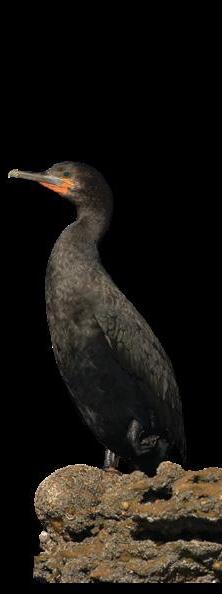
3. Namibia’s largest ethnic group
7. The river forming the northern border with Angola
8. Popular tourist destination town on the Zambezi River
9. Namibia’s highest mountain
10. UNESCO World Heritage Site with ancient rock engravings
11. Wildlife reserve known for cheetah conservation near Otjiwarongo
14. Famous craft market town just outside Windhoek
15. Region known for the Himba people
16. Namibian meat delicacy made from dried beef
1. Dam popular for fishing and boating near Mariental
2. Major safari region east of Etosha
4. Official language of Namibia
5. Common desert plant with long leaves and deep roots
6. Popular adventure activity in Swakopmund
12. Namibia’s marine gateway and deep-sea port
13. Iconic dunes located in this region
The goal of Sudoku is to fill a 9×9 grid with numbers so that each row, column and 3×3 section contain all of the digits between 1 and 9.

Bastille Day
This is the national day of France as well as the anniversary of the Storming of the Bastille on 14 July 1789, a major event of the French Revolution.

in 1918.

A praying mantis, its limbs like folded origami, stands sentinel on a handrail at Ongava Game Reserve, bordering Etosha National Park. Vivid green with flecks of gold, it turns its triangular head curiously. Perfectly still. Namibia’s wilderness is filled with watchers great and small.
van Wyk





www.hillsidewindhoek.com



